Richard Stallman
description: American software freedom activist, short story writer and computer programmer, founder of the GNU project
107 results
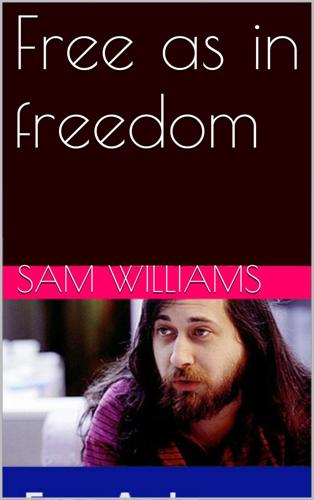
Free as in Freedom
by
Sam Williams
Published 16 Nov 2015
Free As In Freedom Williams, Sam Published: 2002 Categorie(s): Non-Fiction, Biography & autobiography Source: http://www.faifzilla.org/ 1 About Williams: Sam Williams is an American journalist. He is perhaps best known as the author of a biography of software programmer Richard Stallman, Free as in Freedom: Richard Stallman's Crusade for Free Software (2002). Copyright: Please read the legal notice included in this e-book and/or check the copyright status in your country. Note: This book is brought to you by Feedbooks http://www.feedbooks.com Strictly for personal use, do not use this file for commercial purposes. 2 Preface The work of Richard M. Stallman literally speaks for itself. From the documented source code to the published papers to the recorded speeches, few people have expressed as much willingness to lay their thoughts and their work on the line.
…
I hope you enjoy this typo-free version. Thanks to Alice Lippman for the interviews, cookies, and photographs. Thanks to my family, Steve, Jane, Tish, and Dave. And finally, last but not least: thanks to Richard Stallman for having the guts and endurance to "show us the code." - Sam Williams 4 Chapter 1 For Want of a Printer I fear the Greeks. Even when they bring gifts. —Virgil The Aeneid The new printer was jammed, again. Richard M. Stallman, a staff software programmer at the Massachusetts Institute of Technology's Artificial Intelligence Laboratory (AI Lab), discovered the malfunction the hard way. An hour after sending off a 50-page file to the office laser printer, Stallman, 27, broke off a productive work session to retrieve his documents.
…
Since July, 2000, I have learned to appreciate both the seductive and the repellent sides of the Richard Stallman persona. Like Eben Moglen before me, I feel that dismissing that persona as epiphenomenal or distracting in relation to the overall free software movement would be a grievous mistake. In many ways the two are so mutually defining as to be indistinguishable. While I'm sure not every reader feels the same level of affinity for Stallman-indeed, after reading this book, some might feel zero affinityI'm sure most will agree. Few individuals offer as singular a human portrait as Richard M. Stallman. It is my sincere hope that, with this initial portrait complete and with the help of the GFDL, others will feel a similar urge to add their own perspective to that portrait. 170 Appendix A: Terminology For the most part, I have chosen to use the term GNU/Linux in reference to the free software operating system and Linux when referring specifically to the kernel that drives the operating system.
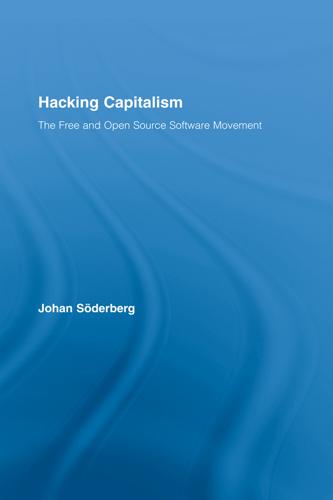
Hacking Capitalism
by
Söderberg, Johan; Söderberg, Johan;
It is much harder to decompile and it is often prohibited in law. 17. A collection of Richard Stallman’s speeches, where he outlines the major issues within the free software movement, as well as an appendix with the GNU General Public License, the GNU Lesser General Public License, and GNU Free Documentation License, can be found in ed. Joshua Gay, Free Software, Free Society: Selected Essays of Richard M. Stallman (Boston: GNU Press, 2002). An excellent study of the FOSS movement has been made by Glyn Moody, Rebel Code—Linux and the Open Source Revolution (London: Penguin Press, 2001); hereafter cited in text. 18. Richard Stallman, “The GNU Operating System and the Free Software Movement”, in ed.
…
David Noble, Forces of Production—A Social History of Industrial Automation (New York: Alfred A Knopf, 1984), 231, hereafter cited in text. 71. The story about how Richard Stallman came to realise the virtues of free source code is remarkably similar. A Xerox printer in Stallman’s laboratory frequently malfunctioned. He knew that he could fix the problem, but he was prevented from improving the printer because of the proprietary license. ed. Joshua Gay Free Software, Free Society: Selected Essays of Richard M. Stall-man, (Boston: GNU Press, 2002). 72. The existence of a white collar working class is hardly controversial anymore. For a review of the debate, see Richard Sobel, White Collar Working Class— From Structure to Politics (New York: Praeger, 1989). 73. ed.
…
The need for legal protection of shared work has been learned the hard way by hackers. Richard Stallman made the discovery when he was working with GNU Emacs, an application for editing source code. An Emac for UNIX had previously been written by another programmer, James Gosling. Initially, Gosling distributed his source code for free of charge and without restrictions. Richard Stallman incorporated bits of James Gosling’s work into GNU Emacs. Later, James Gosling changed his mind and sold his copyright to UniPress. The company went after Richard Stallman and told him not to use the source code that was now had become theirs.
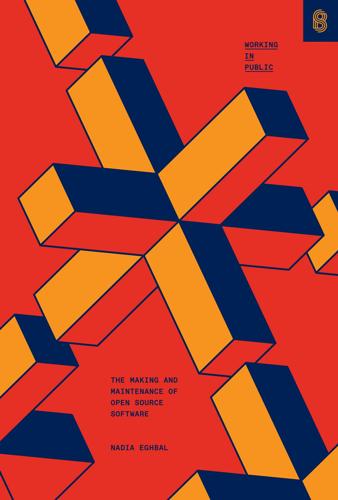
Working in Public: The Making and Maintenance of Open Source Software
by
Nadia Eghbal
Published 3 Aug 2020
Dodds and Sarah Drasner, “An Open Source Etiquette Guidebook,” CSS-Tricks, December 8, 2017, https://css-tricks.com/open-source-etiquette-guidebook/. 50 “Sindre Sorhus Is Creating Open Source Software,” Patreon, accessed March 31, 2020, https://www.patreon.com/sindresorhus. 51 “Feross Is Creating Open Source Software like WebTorrent and Standard,” Patreon, accessed March 31, 2020, https://www.patreon.com/feross/. 52 Dan Abramov (@Dan_Abramov), “I’m Sorry for Disappearing (…),” Twitter, August 27, 2019, 8:55 a.m., https://twitter.com/dan_abramov/status/1166333416272486400. 53 Linus Torvalds, “Linux 4.19-rc4 Released, an Apology, and a Maintainership Note,” LKML, September 16, 2018, https://lkml.org/lkml/2018/9/16/167. 54 Pamela Chestek, “Member conduct,” [License-discuss], February 28, 2020, https://lists.opensource.org/pipermail/license-discuss_lists.opensource.org/2020-February/021350.html. Eric S. Raymond, “The Right to Be Rude,” Armed and Dangerous, February 27, 2020, http://esr.ibiblio.org/?p=8609. 55 Richard Stallman, “Political Notes from 2019: July - October,” Richard Stallman’s Personal Site, October 31, 2019, https://stallman.org/archives/2019-jul-oct.html. Free Software Foundation, “Richard M. Stallman Resigns,” Free Software Foundation, n.d., https://www.fsf.org/news/richard-m-stallman-resigns. 56 Sindre Sorhus (@sindresorhus), “An observation after having . . .,” Twitter, December 8, 2016, 2:03 p.m., https://twitter.com/sindresorhus/status/806937150575017984. 57 Sindre Sorhus (@sindresorhus), “Some observations from having . . .,” Twitter, May 21, 2019, 7:03 a.m., https://twitter.com/sindresorhus/status/1130791267393163267?
…
The generational successor to hackers today might be cryptographers and those who dabble in information security: those who flirt with the law, and do so with a wink and a bow. Although Levy doesn’t focus exclusively on free and open source developers in his book, hacker culture in the 1980s and ’90s was closely intertwined with the early generation of free and open source software, as evinced by a trio of leaders: Richard Stallman, Eric S. Raymond, and Linus Torvalds. Richard Stallman (also known as RMS) was the hacker who kicked off the free software movement at MIT in the 1980s. Eric S. Raymond (also known as ESR), the programmer who helped rebrand free software to “open source” in the 1990s, is widely viewed as early open source’s unofficial anthropologist.
…
Even after Git’s release, however, there still wasn’t a standardized developer workflow. To some extent, early free and open source developers enjoyed this cacophony of tools and customs and processes, because it meant that no one tool dominated the space, and nobody could capture full developer mindshare. Richard Stallman, the MIT hacker who’s generally credited with starting the free software movement, was inspired to launch the GNU project, a free software operating system, in 1983, after attempting to customize a Xerox printer in MIT’s AI Lab and finding that he could not access or modify its source code. Stallman wanted to liberate code from proprietary use.
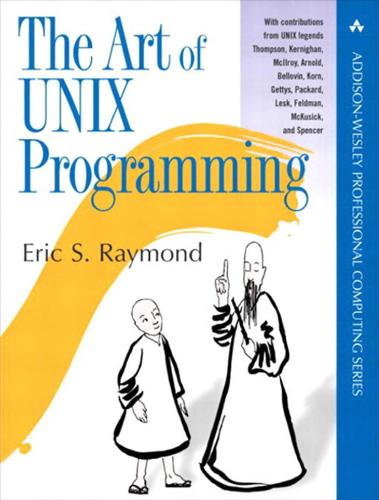
The Art of UNIX Programming
by
Eric S. Raymond
Published 22 Sep 2003
[117] The religion of ed is exemplified by a famous Usenet posting which the reader may be able to find with a Web search for “Ed is the standard editor”. While it is clearly intended as parody, it is by no means clear that the author was entirely joking. Most Unix hackers would read it as an example of “Ha ha, only serious”. [118] http://plan9.bell-labs.com/sys/doc/sam/sam.html [119] The designers of Emacs were Richard M. Stallman, Bernie Greenberg, and Richard M. Stallman. The original Emacs was Stallman's invention, the first version with an embedded Lisp was Greenberg's, and the now-definitive version is Stallman's derived from Greenberg's. No complete account of the design history has been written in 2003, but Greenberg's Multics Emacs: The History, Design, and Implementation is illuminating and readily discoverable via keyword search on the Web
…
By the time I expanded the old ARPANET Jargon File into the New Hacker's Dictionary [Raymond96] in 1991, the two cultures had effectively fused. The Jargon File, born on the ARPANET but revised on Usenet, aptly symbolized the merger.) But TCP/IP networking and slang were not the only things the post-1980 hacker culture inherited from its ARPANET roots. It also got Richard Stallman, and Stallman's moral crusade. Richard M. Stallman (generally known by his login name, RMS) had already proved by the late 1970s that he was one of the most able programmers alive. Among his many inventions was the Emacs editor. For RMS, the Jupiter cancellation in 1983 only finished off a disintegration of the MIT AI Lab culture that had begun a few years earlier as many of its best went off to help run competing Lisp-machine companies.
…
To the early ARPANET hackers, on the other hand, it was more than a tactic: it was something rather closer to a shared religion, partly arising from the academic “publish or perish” imperative and (in its more extreme versions) developing into an almost Chardinist idealism about networked communities of minds. The most famous of these hackers, Richard M. Stallman, became the ascetic saint of that religion. Internet Fusion and the Free Software Movement: 1981-1991 After 1983 and the BSD port of TCP/IP, the Unix and ARPANET cultures began to fuse together. This was a natural development once the communication links were in place, since both cultures were composed of the same kind of people (indeed, in a few but significant cases the same people).
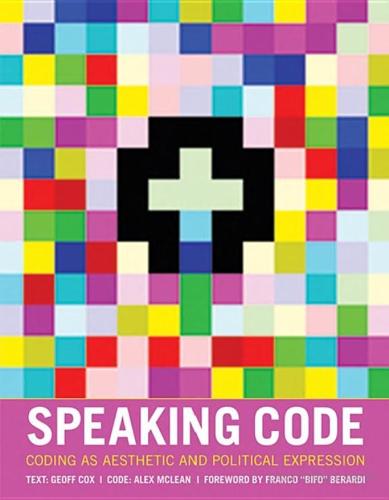
Speaking Code: Coding as Aesthetic and Political Expression
by
Geoff Cox
and
Alex McLean
Published 9 Nov 2012
Michel Bauwens, “The Social Web and Its Social Contracts: Some Notes on Social Antagonism in Netarchical Capitalism,” Re-Public (2008; available at http://www.re-public.gr/en/?p=261). 45. Ibid. 46. Ibid. 47. Virno, A Grammar of the Multitude, 110. 48. Christopher M. Kelty, Two Bits: The Cultural Significance of Free Software (Durham: Duke University Press, 2008), 143–178. 128 Notes to Pages 77–79 49. Ibid., 113. 50. Richard M. Stallman, Free Software, Free Society: Selected Essays of Richard M. Stallman, ed. Joshua Gay (Boston: GNU Press, 2002), 41. The phrase is further explored by Superflex in their project Free Beer, as they playfully collapse the distinction: “FREE BEER is a beer which is free in the sense of freedom, not in the sense of free beer” (available at http:// www.superflex.net/projects/freebeer/).
…
Behavioral and Brain Sciences 3 (1980): 417–424. Sondheim, Alan. “Introduction to Codework.” American Book Review 22 (6) (September/October 2001). Available at http://www.litline.org/ABR/issues/Volume22/Issue6/sondheim.pdf. Stallman, Richard M. Free Software, Free Society: Selected Essays of Richard M. Stallman. Ed. Joshua Gay. Boston: GNU Press, 2002. Stallman, Richard M. “Why Software Should Not Have Owners.” 1994. Available at http:// www.gnu.org/philosophy/why-free.html. Stephenson, Neal. Cryptonomicon. New York: HarperCollins, 2002. Terranova, Tiziana. “Free Labor: Producing Culture for the Digital Economy.”
…
Behind this crucial issue of access to information is the history of the sharing of source code, itself rooted in the history of the UNIX operating system and its precarious position between the promises of the public domain and commercial enterprise, corresponding to the differences between free software and open-source development.17 The former champions the idea of freedom in resistance to proprietary software by keeping software in the public domain (associated with Richard Stallman and the free software movement), while the latter takes the view that open-source development will lead to better implementation and therefore offers economic benefit (associated with Eric Raymond and his free-market approach). According to Raymond, UNIX is open as it works across different computer platforms, and as such it is the “closest thing to a hardware-independent standard for writing truly portable software.”18 In supporting multiple program interfaces and flexibility, it provides access to the hidden depths of the machine.
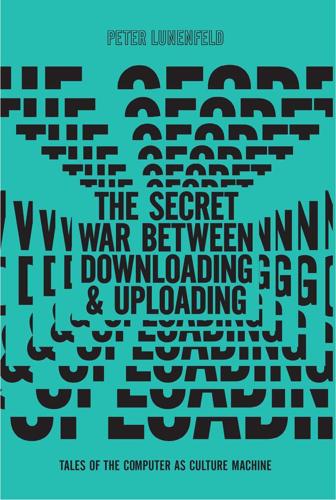
The Secret War Between Downloading and Uploading: Tales of the Computer as Culture Machine
by
Peter Lunenfeld
Published 31 Mar 2011
The full text of the jury’s statement is archived on the Ars Electronica site, available at <http://90.146.8.18/en/archives/prix_archive/prix_projekt.asp?iProjectID=2183>. 25 . See <http://www.gnu.org/gnu/thegnuproject.html>. See also Richard M. Stallman, Free Software, Free Society: Selected Essays of Richard M. Stallman 196 NOTES (Boston: Free Software Foundation, 2002); Sam Williams, Free as in Freedom: Richard Stallman’s Crusade for Free Software (Boston: O’Reilly, 2002). 26 . See Linus Torvalds and David Diamond, Just for Fun: The Story of an Accidental Revolutionary (New York: HarperCollins, 2001). 27 . Computer and social scientist Paul Dourish was the first to tell me the joke that “Linux is free only if the value of your time is zero.” 28 .
…
This shift made sense to the commercial software vendors, and without question created the (relatively) stable set of platforms and softwares that encouraged small businesses as well as individuals to follow the lead of large institutions in digitizing their work and lives. And of course, fortunes were made and lost. Yet throughout the 1970s and 1980s, a few key figures, such as Richard Stallman in particular, felt that the earlier ethos of open-source software was something worth building on. Stallman wanted to extend the sense of scientific collegiality and openness that he valued in the hacker community. So he developed a new operating system compatible with the UNIX family, 170 HOW THE COMPUTER BECAME OUR CULTURE MACHINE but distinct from it, and made it available to other like-minded programmers.

Forge Your Future with Open Source
by
VM (Vicky) Brasseur
As the profits began to roll in for the software developers, some operators—who were used to using and sharing software—started to resent not only the new cost of acquiring software but also that they could no longer modify it for their needs and then share the updated software with others. In 1983 Richard M. Stallman (RMS),[25] frustrated that software operators were no longer free to inspect, modify, and share software, announced the launch of the GNU Project.[26] This project is dedicated to the creation of a UNIX-compatible operating system built of components that are entirely free to use, modify, and distribute.
…
This book uses the abbreviation FOSS. “Free as in…” Spend any time in FOSS and you’ll very soon see statements that start with these three words. The three most common variations are “Free as in Speech,” “Free as in Beer,” and “Free as in Puppy.” The speech and beer variations are from a quote by Richard M. Stallman and are related and play on the multiple meanings of free in the English language. “Free as in Speech” uses free in its libre sense: few restrictions placed on the thing. “Free as in Beer” uses free in its gratis sense: no monetary cost. “Free as in Puppy” also plays on the gratis meaning of free, but with the added complication that comes from bringing a living, breathing thing into your life.
…
A Brief Introduction to Copyright and Licensing A lot of the content above has been all “license” this and “license” that without a lot of context on what a license actually is and why it’s such a big deal, particularly for free and open source software. So it’s time for a very brief introduction to copyright, a complicated matter without which free and open source software wouldn’t exist. As you saw above, Richard Stallman realized that he could use the existing copyright laws and systems to ensure software would always remain Free through careful licensing. Copyright therefore underpins everything in FOSS. Without it, and without an understanding of it, FOSS is not possible. Keep in mind: copyright law is a complex subject, so this is only a rudimentary introduction.

The Future of Ideas: The Fate of the Commons in a Connected World
by
Lawrence Lessig
Published 14 Jul 2001
So proprietary software is mutually exclusive with free software, but there can be commercial software that [is] free software.” Telephone interview by Hiroo Yamagata with Richard M. Stallman, August 8, 1997. 11 Peter Wayner, Free for All: How Linux and the Free Software Movement Undercut the High-Tech Titans (New York: HarperBusiness, 2000), 36. 12 For a discussion of Stallman and the history of GNU/Linux, see ibid., 9, 34-36, 67-68; Stallman, 53-66; Mark Leon, “Richard Stallman, GNU/Linux,” InfoWorld (October 9, 2000): 62. 13 See, e.g., Linus Torvalds and David Diamond, Just for Fun: The Story of an Accidental Revolutionary (New York: HarperBusiness, 2001); Pekka Himanen, Manuel Castells (epilogue), and Linus Torvalds (prologue), The Hacker Ethic and the Spirit of the Information Age (New York: Random House, 2001); Paula Rooney, “No. 11: The Dark Horse,” Computer Reseller News, November 15, 1999. 14 Stallman: “Around 1992, combining Linux with the not-quite-complete GNU system resulted in a complete free operating system.
…
While the furor of many of those readers is sometimes hard to suffer, the insights and wisdom of many have been critical in re-forming the views I express here. Finally, there is a collection of people who figure throughout the story of this book, but who were more central to its writing than the text might reveal. These are the figures who are truly fighting for a cause. Some of them are quite well known—Richard Stallman, for example. Others are well known among lawyers, at least—Dennis Karjala, Jessica Litman, Marc Rotenberg, Pam Samuelson. But others inspire more through their simple and quiet perseverance. Eric Eldred, whom you will meet in the course of these pages, is the best example of this type. These ideas would never have been put into words without the inspiration from people like him.
…
So deep is the rhetoric of control within our culture that whenever one says a resource is “free,” most believe that a price is being quoted—free, that is, as in zero cost. But “free” has a much more fundamental meaning—in French, libre rather than gratis, or for us non-French speakers, and as the philosopher of our age and founder of the Free Software Foundation Richard Stallman puts it, “free, not in the sense of free beer, but free in the sense of free speech.”12 A resource is “free” if (1) one can use it without the permission of anyone else; or (2) the permission one needs is granted neutrally. So understood, the question for our generation will be not whether the market or the state should control a resource, but whether that resource should remain free.13 This is not a new question, though we've been well trained to ignore it.
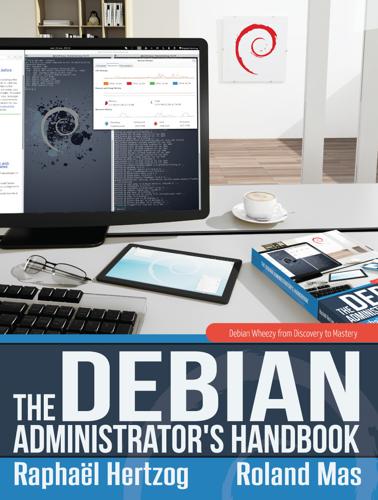
The Debian Administrator's Handbook, Debian Wheezy From Discovery to Mastery
by
Raphaal Hertzog
and
Roland Mas
Published 24 Dec 2013
Thus, peer review would continuously improve the product. CULTURE GNU, the project of the FSF The GNU project is a range of free software developed, or sponsored, by the Free Software Foundation (FSF), originated by its iconic leader, Dr. Richard M. Stallman. GNU is a recursive acronym, standing for “GNU is Not Unix”. CULTURE Richard Stallman FSF's founder and author of the GPL license, Richard M. Stallman (often referred to by his initials, RMS) is a charismatic leader of the Free Software movement. Due to his uncompromising positions, he's not unanimously admired, but his non-technical contributions to Free Software (in particular at the legal and philosophical level) are respected by everybody. 1.1.1.
…
The non-free archive is different because it contains software which does not (entirely) conform to these principles but which can nevertheless be distributed without restrictions. This archive, which is not officially part of Debian, is a service for users who could need some of those programs — however Debian always recommends giving priority to free software. The existence of this section represents a considerable problem for Richard M. Stallman and keeps the Free Software Foundation from recommending Debian to users. Contrib (contributions) is a set of open source software which cannot function without some non-free elements. These elements can be software from the non-free section, or non-free files such as game ROMs, BIOS of consoles, etc.
…
For example, the license must not insist that all other programs distributed on the same medium must be free software. BACK TO BASICS Copyleft Copyleft is a principle that consists in using copyrights to guarantee the freedom of a work and its derivatives, rather than restrict the rights of uses, as is the case with proprietary software. It is, also, a play of words on the term “copyright”. Richard Stallman discovered the idea when a friend of his, fond of puns, wrote on an envelope addressed to him: “copyleft: all rights reversed”. Copyleft imposes preservation of all initial liberties upon distribution of an original or modified version of a work (usually a program). It is, thus, not possible to distribute a program as proprietary software if it is derived from code from a copyleft released program.

The Innovators: How a Group of Inventors, Hackers, Geniuses and Geeks Created the Digital Revolution
by
Walter Isaacson
Published 6 Oct 2014
story=A_Rich_Neighbor_Named_Xerox.txt. 115. Author’s interviews with Steve Jobs and Bill Gates. 116. Author’s interview with Steve Jobs. 117. In addition to the sources cited below, this section is based on my interview with Richard Stallman; Richard Stallman, essays and philosophy, on http://www.gnu.org/gnu/gnu.html; Sam Williams, with revisions by Richard M. Stallman, Free as in Freedom (2.0): Richard Stallman and the Free Software Revolution (Free Software Foundation, 2010). An earlier edition of the Williams book was published by O’Reilly Media in 2002. As that edition was being completed, Stallman and Williams “parted on less than cordial terms” based on Stallman’s objections and requests for corrections.
…
Author’s interview with Richard Stallman. See also K. C. Jones, “A Rare Glimpse into Richard Stallman’s World,” InformationWeek, Jan. 6, 2006; Richard Stallman interview, in Michael Gross, “Richard Stallman: High School Misfit, Symbol of Free Software, MacArthur-Certified Genius,” 1999, www.mgross.com/interviews/stallman1.html; Williams, Free as in Freedom, 26 and passim. 119. Richard Stallman, “The GNU Operating System and the Free Software Movement,” in Chris DiBona and Sam Ockman, editors, Open Sources: Voices from the Open Source Revolution (O’Reilly, 1999). 120. Author’s interview with Richard Stallman. 121.
…
Author’s interview with Richard Stallman. 121. Richard Stallman, “The GNU Project,” http://www.gnu.org/gnu/thegnuproject.html. 122. Williams, Free as in Freedom, 75. 123. Richard Stallman, “The GNU Manifesto,” http://www.gnu.org/gnu/manifesto.html. 124. Richard Stallman, “What Is Free Software?” and “Why Open Source Misses the Point of Free Software,” https://www.gnu.org/philosophy/. 125. Richard Stallman, “The GNU System,” https://www.gnu.org/philosophy/. 126. Interview with Richard Stallman, conducted by David Betz and Jon Edwards, BYTE, July 1986. 127. “Linus Torvalds,” Linux Information Project, http://www.linfo.org/linus.html. 128.
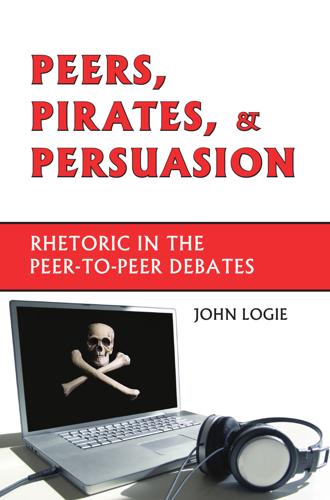
Peers, Pirates, and Persuasion: Rhetoric in the Peer-To-Peer Debates
by
John Logie
Published 29 Dec 2006
Nysd.uscourts. gov. 20 Apr. 2005 <http://www.nysd.uscourts.gov/courtweb/pdf/ D02NYSC/00–09078.pdf>. Segaller, Stephen. Nerds 2.0.1: A Brief History of the Internet. New York: TV Books, 1998. Sony Corp. of Amer. v. Universal City Studios, Inc. Vol. 464 U.S. 417, 1984. Stallman, Richard M. (Cambridge Mass.). Free Software, Free Society : Selected Essays of Richard M. Stallman. Ed. Joshua Gay. Boston, MA: Free Software Foundation, 2002. Stapp, Scott. “What Artists & Songwriters Say.” MusicUnited. 6 Nov. 2002. MusicUnited.org. 20 Aug. 2006 <http://www.musicunited.org/3_artists. html>. Strauss, Neil. “File-Sharing Battle Leaves Musicians Caught in the Middle.” New York Times 14 Sep. 2003. 1:1.
…
Again, the judgment hinges on a determination with respect to the hackers’ intent, but in place of Professor Tucker’s “boys will be boys” defense, we have Levy’s rather grandiose suggestion that the hackers’ visitation of others’ computers was participating in an expansive process of positive global transformation. One hacker who arguably deserves Levy’s hyperbole is Richard Stallman, whose has worked for two decades as the leader and inspiration for the “Free Software” movement and the chief developer of “GNU,” a resolutely free alternative to the proprietary UNIX operating system. Like Levy, Stallman cites “playfulness, cleverness, and exploration” as the signature elements of true hacking (15).
…
The successful public branding of Michael Robertson as a “pirate,” raises a serious question as to just how much creativity and innovation will be lost because the U.S. is, apparently, incapable of conducting the debate over peer-to-peer technologies with simultaneous attention to nuance, civility, and basic fairness. True to his prescient form, Richard Stallman was among the first to identify and decry the content industries’ campaign to broaden the meaning of piracy. In his 1996 catalog of “21 Words to Avoid” (since expanded and more accurately retitled “Some Confusing or Loaded Words and Phrases That Are Worth Avoiding”) Stallman offers this clear, direct, and concise critique of a rhetorical shift that he lays at the doorstep of the content industries: Publishers often refer to prohibited copying as “piracy.”
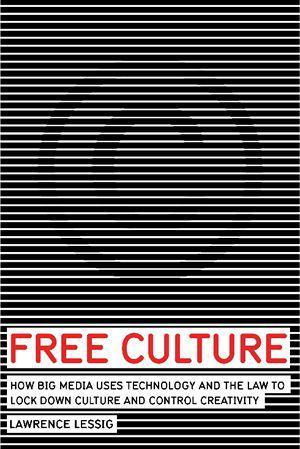
Free culture: how big media uses technology and the law to lock down culture and control creativity
by
Lawrence Lessig
Published 15 Nov 2004
Rebuilding Free Culture: One Idea Chapter 2 - Them, Soon 1. More Formalities 2. Registration and Renewal 3. Marking 4. Shorter Terms 5. Free Use Vs. Fair Use 6. Liberate the Music—Again 7. Fire Lots of Lawyers Notes Acknowledgments [1] David Pogue, "Don't Just Chat, Do Something," New York Times, 30 January 2000. [2] Richard M. Stallman, Free Software, Free Societies 57 ( Joshua Gay, ed. 2002). [3] William Safire, "The Great Media Gulp," New York Times, 22 May 2003. [4] St. George Tucker, Blackstone's Commentaries 3 (South Hackensack, N.J.: Rothman Reprints, 1969), 18. [5] United States v. Causby, U.S. 328 (1946): 256, 261.
…
The law is changing; that change is altering the way our culture gets made; that change should worry you—whether or not you care about the Internet, and whether you're on Safire's left or on his right. The inspiration for the title and for much of the argument of this book comes from the work of Richard Stallman and the Free Software Foundation. Indeed, as I reread Stallman's own work, especially the essays in Free Software, Free Society, I realize that all of the theoretical insights I develop here are insights Stallman described decades ago. One could thus well argue that this work is "merely" derivative.
…
When computers with software were first made available commercially, the software—both the source code and the binaries— was free. You couldn't run a program written for a Data General machine on an IBM machine, so Data General and IBM didn't care much about controlling their software. That was the world Richard Stallman was born into, and while he was a researcher at MIT, he grew to love the community that developed when one was free to explore and tinker with the software that ran on machines. Being a smart sort himself, and a talented programmer, Stallman grew to depend upon the freedom to add to or modify other people's work.
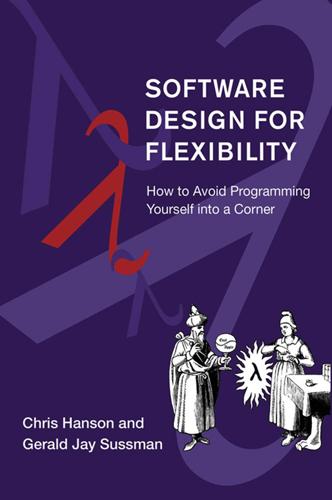
Software Design for Flexibility
by
Chris Hanson
and
Gerald Sussman
Published 17 Feb 2021
Maynard, MA: Digital Equipment Corporation, 1990. [116]Guy L. Steele Jr.; The Definition and Implementation of a Computer Programming Language Based on Constraints, PhD thesis, MIT, also Artificial Intelligence Laboratory Technical Report 595, August 1980. [117]Guy Lewis Steele Jr., Donald R. Woods, Raphael A. Finkel, Mark R. Crispin, Richard M. Stallman, and Geoffrey S. Goodfellow; The Hacker's Dictionary. New York: Harper & Row, 1983. [118]Patrick Suppes; Introduction to Logic. New York: D. Van Nostrand, 1957. [119]Gerald Jay Sussman and Richard Matthew Stallman; “Heuristic Techniques in Computer-Aided Circuit Analysis,” in IEEE Transactions on Circuits and Systems, 22(11) (November 1975): 857–865
…
Johnson, Eli Davis, Micah Brodsky, Manushaqe Muco, Kenny Chen, and Leilani Hendrina Gilpin have been especially helpful. Many of the ideas presented here were developed with the help of friends and former students. Richard Stallman, Jon Doyle, David McAllester, Ramin Zabih, Johan deKleer, Ken Forbus, and Jeff Siskind all contributed to our understanding of dependency-directed backtracking. And our understanding of propagation, in chapter 7, is the result of years of work with Richard Stallman, Guy Lewis Steele Jr., and Alexey Radul. We are especially grateful for the help and support of the functional-programming community, and especially of the Scheme Team.
…
In many ways this book is an advanced sequel to SICP. Dan Friedman, with his many wonderful students and friends, has made deep contributions to our understanding of programming. We have had many conversations about the art of programming with some of the greatest wizards, such as William Kahan, Richard Stallman, Richard Greenblatt, Bill Gosper, and Tom Knight. Working with Jack Wisdom for many years on mathematical dynamics helped clarify many of the issues that we address in this book. Sussman wants to especially acknowledge the contributions of his teachers: ideas from discussions with Marvin Minsky, Seymour Papert, Jerome Lettvin, Joel Moses, Paul Penfield, and Edward Fredkin appear prominently in this text.

Reinventing Discovery: The New Era of Networked Science
by
Michael Nielsen
Published 2 Oct 2011
[200] Lee Smolin. The Trouble with Physics. London: Allen Lane, 2006. [201] Ron Solomon. On finite simple groups and their classification. Notices of the American Mathematical Society, 42(2):231–239, February 1995. http://www.ams.org/notices/199502/solomon.pdf. [202] Richard M. Stallman. Free Software, Free Society: Selected Essays of Richard M. Stallman. Boston: Free Software Foundation, 2002. http://www.gnu.org/philosophy/fsfs/rms-essays.pdf. [203] Garol Stasser and William Titus. Hidden profiles: A brief history. Psychological Inquiry, 14(3&4):304–313, 2003. [204] Garold Stasser and William Titus.
…
Other organizations working toward open science include Science Commons (http://sciencecommon.sorg), which is part of the Creative Commons organization, and the Open Knowledge Foundation (http://okfn.org). The challenge of creating a more open culture is not limited to science. It’s also being confronted in general culture. People such as Richard Stallman [202], Lawrence Lessig [122], and many others have described the benefits openness brings in a networked world. They’ve developed tools such as Creative Commons licensing (http://creativecommons.org) and “copyleft” licenses to help bring about a more open culture. My thinking has been especially strongly influenced by Lessig [122].
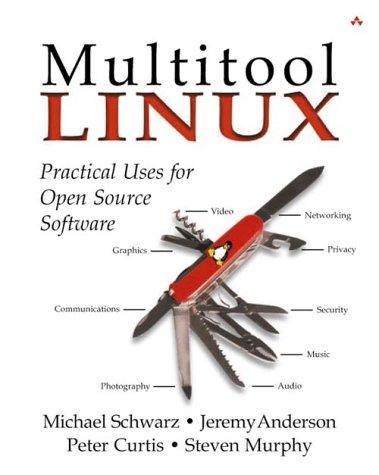
Multitool Linux: Practical Uses for Open Source Software
by
Michael Schwarz
,
Jeremy Anderson
and
Peter Curtis
Published 7 May 2002
All of the licenses we cover here give you at least those rights. If you plan to use the source code in a program of your own, be more alert. This is where these licenses differ wildly. The GPL GPL stands for GNU Public License. GNU stands for "GNU's not Unix." GNU is a project launched by the founder of the Free Software Foundation (FSF), one Richard M. Stallman, or RMS, as he is often called. He believes that all software should be free. He does not mean that all software should be gratis, but rather that all software should be "liberated." The phrase Stallman uses is "Think free speech, not free beer." Stallman is often denounced as at best naive, at worst communist.
…
Some have iconoclasism thrust upon 'em. There is a single major split in the philosophies of free software. (Note the lowercase letters: When we use lowercase, we mean software that is free and for which you get the source code.) The split is between Richard Stallman and his "Free Software" philosophy and Eric Raymond and Bruce Perens with their "Open Source" philosophy. Richard Stallman We have already talked about RMS, the father of the GPL and the first to codify a philosophy of "liberated" software. People had shared source code in the past; he certainly did not invent that. What he did was to articulate what it means for software to be "Free."
…
This is called "piracy," and it is, quite rightly, against the law. It turns out, however, that those of us who write software also would like to get software for free. So some of us started writing code and giving it away. We get paid back in the form of the other free software written by other programmers. At this point, thanks to people like Richard Stallman of the Free Software Foundation and Linus Torvalds (author of the Linux kernel), you can now have a complete multiuser network server operating system and a whole slew of applications for free. You can also, if you are a programmer, get all the source code for all of it and add features or fix bugs yourself, if you are so inclined.

The Zero Marginal Cost Society: The Internet of Things, the Collaborative Commons, and the Eclipse of Capitalism
by
Jeremy Rifkin
Published 31 Mar 2014
The hobby-hacker cultures at university tech hubs like MIT, Carnegie Mellon, and Stanford, which had enjoyed a collegial and collaborative sharing of computing and software in a more relaxed, playful, and creative academic milieu, were faced with new actors in their midst, who were determined to take this new communications revolution into the marketplace. Gates was the first to draw the line in the sand. Another young hacker, Richard M. Stallman, who worked at MIT’s Artificial Intelligence Laboratory, took the challenge and crossed the line. Rallying around Free Software Stallman argued that software code was quickly becoming the language of communication between people, and between people and things, and that it was immoral and unethical to enclose and privatize the new communications media, allowing a few corporate players to determine the conditions of access while imposing rent.
…
His thoughts were more contemplative than declarative—and put forth in the form of an observation. He wrote: At the very least, there is some possibility, even hope, that we could have a world in which much more of intellectual and inventive production is free. “‘Free’ as in ‘free speech,’” Richard Stallman says, not “‘free’ as in ‘free beer.’” But we could hope that much of it would be both free of centralized control and low cost or no cost. When the marginal cost of production is zero, the marginal cost of transmission and storage approaches zero, the process of creation is additive, and much of the labor doesn’t charge—well, the world looks a little different.
…
Vaughan-Nichols, “Fast, Faster, Fastest: Linux Rules Supercomputing,” ZD Net, June 19, 2012, http://www.zdnet.com/blog/open-source/fast-faster-fastest-linux-rules-supercomputing/ 11263 (accessed June 13, 2013); Roger Parloff, “How Linux Conquered the Fortune 500,” CNN Money, May 6, 2013, http://money.cnn.com/2013/05/06/technology/linux-500.pr.fortune/ (accessed November 13, 2013). 8. Moglen, “Anarchism Triumphant.” 9. Ibid. 10. “History of the OSI,” Open Source Initiative, September 2012, http://opensource.org/history (accessed June 13, 2013). 11. Richard Stallman, “Why ‘Open Source’ Misses the Point of Free Software,” Communications of the ACM 52(6) (2009): 31. 12. Ibid. 13. Ibid., 33. 14. Eric Steven Raymond, “The Cathedral and the Bazaar,” UnderStone.net, August 22, 2001 http://www.unterstein.net/su/docs/CathBaz.pdf (accessed June 13, 2013). 15.

The Cultural Logic of Computation
by
David Golumbia
Published 31 Mar 2009
In Sandra Berman and Michael Wood, eds., Nation, Language, and the Ethics of Translation. Princeton, NJ: Princeton University Press, 93–110. Sproat, Richard, ed. 1998. Multilingual Text-to-Speech Synthesis: The Bell Labs Approach. Dordrecht: Kluwer Academic Publishers. Stallman, Richard. 2002. Free Software, Free Society: Selected Essays of Richard M. Stallman. Joshua Gay, ed. Boston: GNU Press. Staten, Henry. 1984. Wittgenstein and Derrida. Lincoln: University of Nebraska Press. Stein, Gertrude. 1990. Selected Writings of Gertrude Stein. New York: Vintage. References p 248 Strauss, Leo. 1953. Natural Right and History. Chicago: University of Chicago Press.
…
Because human being as such is terrifically mutable— especially on an anti-essentialist, poststructuralist account like the one endorsed here—there is little doubt that the more we imagine ourselves to be like computers, the more computer-like we will become; conversely, the more we imagine computers can take over sociopolitical functions, the more we will give up our own influence over those phenomena—and the more they will pass into the domain of exactly the powerful agents (states, transnational corporations, and capital itself) that already dominate so much of social life. I agree with the efforts of critics like Alex Galloway and McKenzie Wark and digital activists like Richard Stallman, Lawrence Lessig, Siva Vaidhyanathan, Eric Raymond, and Jimmy Wales, that those of us involved in the creation of computer resources need to keep agitating not merely for open source and free software, but also against the development of regimes of corporate ownership not merely of “intellectual property” but of what T The Cultural Logic of Computation p 222 must be understood as simultaneously inventions and discoveries.

Rebel Code: Linux and the Open Source Revolution
by
Glyn Moody
Published 14 Jul 2002
Soft-spoken and avuncular, Wall’s calm presence at conferences and before the press has helped to combat clichéd images of hackers as unstable, antisocial individuals with little sense of morality and no sense of humor. If Richard Stallman is the father of today’s free software movement, Larry Wall can be rightly considered its favorite uncle. 9 The Art of Code LONG BEFORE LARRY WALL WAS THINKING about how to make Perl successful, Richard Stallman had analyzed why the hacker community at the MIT AI Lab had worked so well. He then set about re-creating that community, consciously taking steps that would maximize the chances for its survival.
…
It meant that a Unix-like operating system could be built piecemeal, and that others could help with the task by working independently on some of the various components. It was even conceivable that one person alone–if exceptional enough–could put together the entire operating system if given enough time. One such exceptional person was Richard Stallman, who labored for years to create a Unix-like system, written from scratch, that would be free. He worked alone at first; then he gradually received contributions from others, including–though neither of them knew it in 1991–Linus, whose Linux program would provide the last major piece still missing from Stallman’s huge software jigsaw puzzle.
…
His example of unswerving dedication to lofty ideals may be too idealistic and daunting for most to follow, but it provides a yardstick of integrity against which the actions of his fellow coders, both great and not-so-great, may be judged. 3 A Minor Rebellion WHEN LINUS ENCOUNTERED UNIX in the fall of 1990, Richard Stallman’s great GNU project, begun six years before, was almost complete. The one crucial element that was still lacking, the kernel, was under development in the form of the GNU Hurd—the heart of Stallman’s operating system. For Stallman, this delay was regrettable but not serious; it was more important that most elements of his free Unix-like system were now available and that the missing piece of the puzzle was on its way.
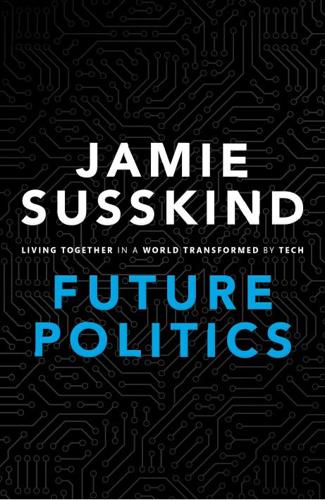
Future Politics: Living Together in a World Transformed by Tech
by
Jamie Susskind
Published 3 Sep 2018
Viktor Mayer-Schönberger and Kenneth Cukier, Big Data:A Revolution that Will Transform How We Live, Work and Think (London: John Murray, 2013), 180. 20. Charles de Secondat, baron de Montesquieu, The Spirit of the Laws, translated by Anne M. Cohler, Basia Carolyn Miller, and Harold Samuel Stone (Cambridge: Cambridge University Press, 1989) (Kindle Edition). 21. Lawrence Lessig, ‘Introduction’, in Richard Stallman, Free Software, Free Society: Selected Essays of Richard M. Stallman (Boston: GNU Press, 2002), 9. OUP CORRECTED PROOF – FINAL, 30/05/18, SPi РЕЛИЗ ПОДГОТОВИЛА ГРУППА "What's News" VK.COM/WSNWS 434 Notes 22. On algorithmic transparency see Frank Pasquale, The Black Box Society: The Secret Algorithms that Control Money and Information (Cambridge, Mass: Harvard University Press, 2015). 23.
…
New York: New York University Press, 2004. Srnicek, Nick. Platform Capitalism. Cambridge: Polity Press, 2017. Srnicek, Nick and Alex Williams. Inventing the Future: Postcapitalism and a World Without Work. London:Verso, 2015. Stallman, Richard. Free Software, Free Society: Selected Essays of Richard M. Stallman. Boston: GNU Press, 2002. Statista. ‘Number of Monthly Active Facebook Users Worldwide as of 3rd Quarter 2017 (in millions). <https://www.statista.com/statistics/ 264810/number-of-monthly-active-facebook-users-worldwide/> (accessed 11 Dec. 2017). Steele, Billy. ‘Police Seek Amazon Echo Data in Murder Case’.
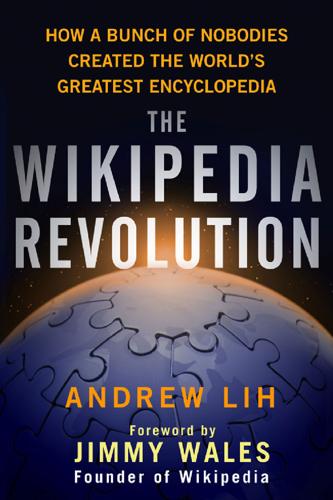
The Wikipedia Revolution: How a Bunch of Nobodies Created the World's Greatest Encyclopedia
by
Andrew Lih
Published 5 Jul 2010
As the Internet was blossoming, many entrepreneurs and developers were inspired by the free software movement, which had become incredibly popular in tech circles. Free software had as its patron saint a quirky and brilliant man named Richard Stallman, and he was about to make an impact well beyond the small hovel of computer geekdom. 24_The_Wikipedia_Revolution RMS You can’t understand the “free” movement on the Internet without understanding Richard Stallman. A heavily bearded, iconoclastic computer programmer, Stallman became a hacking legend at the Massachusetts Institute of Technology in the 1980s for his programming chops. His experiences as a freewheeling software developer, stifled by corporate usurping of his work, would lead him on a crusade he would pursue the rest of his life: a mission to free up software and content for the masses.
…
Wiki_Introduced_79 It’s this industrial-strength caching solution, and a clever crew of volunteer programmers, that allowed Wikipedia to scale to become a top ten Web site, with a budget of less than a million dollars.27 It should be noted, as a historical footnote, that Richard Stallman, who inspired the free software and free content movement, also proposed his own encyclopedia in 1999, and attempted to launch it the same year that Wikipedia took off. Called GNUpedia, it coexisted confusingly in the same space as Bomis’s Nupedia, a completely separate product. Keeping with tradition, Stallman renamed his project GNE—GNU’s Not an Encyclopedia. But in the end, Wikipedia’s lead and enthusiastic community was already well established, and Richard Stallman put the GNE project into inactive status and put his support behind Wikipedia.
…
Linux wasn’t just a free (as in beer) alternative; it was actually a favorite with hard-core programmers because individuals or businesses could take Linux apart and add new functionality, something they could not do very easily with commercial operating systems. Remember DMOZ So the long story of Richard Stallman, free software, Linus, Minix, and Linux brings us all the way back to DMOZ. What did this mean for the DMOZ project? By 1998 open source software had shown it was a viable competitor to commercial software in terms of quality, something people had not expected from a widely distributed band of volunteers.
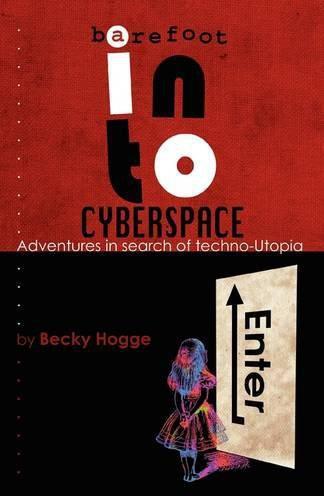
Barefoot Into Cyberspace: Adventures in Search of Techno-Utopia
by
Becky Hogge
,
Damien Morris
and
Christopher Scally
Published 26 Jul 2011
Early on in my career as a tech journalist, I met Richard Stallman at a meeting of free software enthusiasts held in the Postal Workers Union in Edinburgh. By that time, some 20 years into the GNU project, his New York trill had mellowed, but his vision of free software was just as clear. At first I didn’t realise why Stallman was constantly rubbing baby oil in his hands; it was only later I understood he is often troubled by a repetitive strain injury from this obsessive coding in the eighties and nineties, and has been unable to seriously code anything for some time. Richard Stallman coded most of the first versions of GNU all by himself.
…
And then there is the question of how to make money. Although a number of hackers detail how they are still making a good living despite sharing their code with other hackers, everyone agrees those royalty cheques will get smaller if code was routinely given away for free. Enter a 31-year-old Richard Stallman, captioned by the filmmakers as “MITs last hacker”, because, they say, of his decision to remain at the scholarly Massachusetts Institute of Technology despite the temptations of the commercial world. “My project is to make all software free,” he announces at the beginning of the film in a high-pitched, nasal, New York accent.
…
That’s what happens when the blueprints to a computer program are kept secret by the organisation that sells it, and that’s the usual way things are done. “Free as in freedom”, then, not “free as in beer” – Stallman might perhaps have felt more at home among the public-spirited hackers at the 1984 Chaos Communication Congress than amongst Brands happy hippy millionaires. By the time he had arrived at Marin County, Richard Stallman was less than a year into a project that would significantly shape the next twenty, and not just in the world of computing. That project was the GNU operating system, and Stallman’s ambition was to create a complete computer software package that could be shared and modified freely by its users in perpetuity.
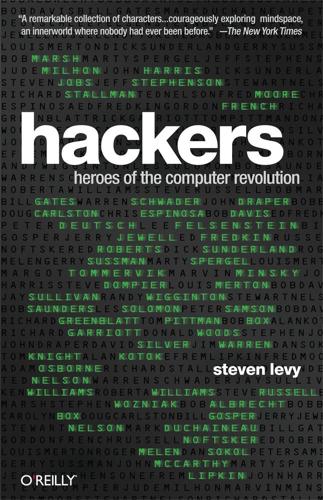
Hackers: Heroes of the Computer Revolution - 25th Anniversary Edition
by
Steven Levy
Published 18 May 2010
The Last of the True Hackers Around the time of Ken Williams’ housewarming party, twenty-five years after the MIT Tech Model Railroad Club discovered the TX-0, a man who called himself the last true hacker sat in a room on the ninth floor of Tech Square—a room cluttered with printouts, manuals, a bedroll, and a blinking computer terminal connected to a direct descendant of the PDP-6, a DEC-20 computer. His name was Richard Stallman, and he spoke in a tense, high-pitched voice that did not attempt to veil the emotion with which he described, in his words, “the rape of the artificial intelligence lab.” He was thirty years old. His pale complexion and scraggly dark hair contrasted vividly with the intense luminescence of his deep green eyes. The eyes moistened as he described the decay of the Hacker Ethic at Tech Square. Richard Stallman had come to MIT twelve years before, in 1971, and had experienced the epiphany that others had enjoyed when they discovered that pure hacker paradise, the Tech Square monastery where one lived to hack, and hacked to live.
…
I read a book the other day. It’s called Ishi, the Last Yahi. It’s a book about the last survivor of a tribe of Indians, initially with his family, and then gradually they died out one by one.” That was the way Richard Stallman felt. Like Ishi. “I’m the last survivor of a dead culture,” said RMS. “And I don’t really belong in the world anymore. And in some ways I feel I ought to be dead.” Richard Stallman did leave MIT, but he left with a plan: to write a version of the popular proprietary computer operating system called UNIX and give it away to anyone who wanted it. Working on this GNU (which stood for “Gnu’s Not Unix”) program meant that he could “continue to use computers without violating [his] principles.”
…
Lee Felsenstein’s terminal-and-computer, built in two frantic months, almost the computer that turned things around. Almost wasn’t enough. Les Solomon. Editor of Popular Electronics, the puller of strings who set the computer revolution into motion. Marty Spergel. The Junk Man, the Homebrew member who supplied circuits and cables and could make you a deal for anything. Richard Stallman. The Last of the Hackers, he vowed to defend the principles of hackerism to the bitter end. Remained at MIT until there was no one to eat Chinese food with. Jeff Stephenson. Thirty-year-old martial arts veteran and hacker who was astounded that joining Sierra On-Line meant enrolling in Summer Camp.
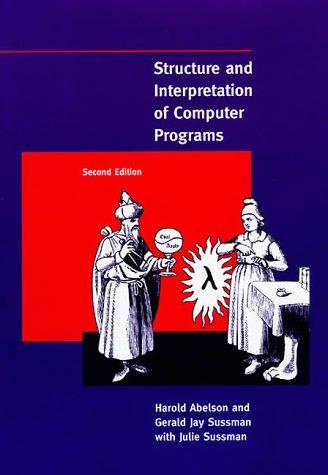
Structure and interpretation of computer programs
by
Harold Abelson
,
Gerald Jay Sussman
and
Julie Sussman
Published 25 Jul 1996
Steele, Guy Lewis, Jr., and Gerald Jay Sussman. 1975. Scheme: An interpreter for the extended lambda calculus. Memo 349, MIT Artificial Intelligence Laboratory. Steele, Guy Lewis, Jr., Donald R. Woods, Raphael A. Finkel, Mark R. Crispin, Richard M. Stallman, and Geoffrey S. Goodfellow. 1983. The Hacker's Dictionary. New York: Harper & Row. Stoy, Joseph E. 1977. Denotational Semantics. Cambridge, MA: MIT Press. Sussman, Gerald Jay, and Richard M. Stallman. 1975. Heuristic techniques in computer-aided circuit analysis. IEEE Transactions on Circuits and Systems CAS-22(11):857-865. Sussman, Gerald Jay, and Guy Lewis Steele Jr. 1980. Constraints – A language for expressing almost-hierachical descriptions.
…
It is hard to enumerate all the people who have made technical contributions to the development of the Scheme systems we use for instructional purposes. In addition to Guy Steele, principal wizards have included Chris Hanson, Joe Bowbeer, Jim Miller, Guillermo Rozas, and Stephen Adams. Others who have put in significant time are Richard Stallman, Alan Bawden, Kent Pitman, Jon Taft, Neil Mayle, John Lamping, Gwyn Osnos, Tracy Larrabee, George Carrette, Soma Chaudhuri, Bill Chiarchiaro, Steven Kirsch, Leigh Klotz, Wayne Noss, Todd Cass, Patrick O'Donnell, Kevin Theobald, Daniel Weise, Kenneth Sinclair, Anthony Courtemanche, Henry M. Wu, Andrew Berlin, and Ruth Shyu.

Structure and Interpretation of Computer Programs, Second Edition
by
Harold Abelson
,
Gerald Jay Sussman
and
Julie Sussman
Published 1 Jan 1984
Scheme: An interpreter for the extended lambda calculus. Memo 349, MIT Artificial Intelligence Laboratory. –› Steele, Guy Lewis, Jr., Donald R. Woods, Raphael A. Finkel, Mark R. Crispin, Richard M. Stallman, and Geoffrey S. Goodfellow. 1983. The Hacker’s Dictionary. New York: Harper & Row. –› Stoy, Joseph E. 1977. Denotational Semantics. Cambridge, MA: MIT Press. Sussman, Gerald Jay, and Richard M. Stallman. 1975. Heuristic techniques in computer-aided circuit analysis. IEEE Transactions on Circuits and Systems CAS-22(11): 857-865. –› Sussman, Gerald Jay, and Guy Lewis Steele Jr. 1980. Constraints—A language for expressing almost-hierachical descriptions.
…
It is hard to enumerate all the people who have made technical contributions to the development of the Scheme systems we use for instructional purposes. In addition to Guy Steele, principal wizards have included Chris Hanson, Joe Bowbeer, Jim Miller, Guillermo Rozas, and Stephen Adams. Others who have put in significant time are Richard Stallman, Alan Bawden, Kent Pitman, Jon Taft, Neil Mayle, John Lamping, Gwyn Osnos, Tracy Larrabee, George Carrette, Soma Chaudhuri, Bill Chiarchiaro, Steven Kirsch, Leigh Klotz, Wayne Noss, Todd Cass, Patrick O’Donnell, Kevin Theobald, Daniel Weise, Kenneth Sinclair, Anthony Courtemanche, Henry M. Wu, Andrew Berlin, and Ruth Shyu.

WTF?: What's the Future and Why It's Up to Us
by
Tim O'Reilly
Published 9 Oct 2017
I once asked Ed Schlossberg, and he didn’t remember either. 5 Mark Twain is reputed to have said: “History Does Not Repeat Itself, but It Rhymes,” Quote Investigator, retrieved March 27, 2017, http://quoteinvestigator.com/2014/01/12/history-rhymes/. 6 free as in freedom: Sam Williams, Free as in Freedom: Richard Stallman’s Crusade for Free Software (Sebastopol, CA: O’Reilly, 2002). See also Richard Stallman, “The GNU Manifesto,” retrieved March 29, 2017, http://www.gnu.org/gnu/manifesto.en.html. 8 “The Cathedral and the Bazaar”: Originally published at http://www.unterstein. net/su/docs/CathBaz.pdf. Book version: Eric S. Raymond, The Cathedral & the Bazaar (Sebastopol, CA: O’Reilly, 2001). 9 “Hardware, Software, and Infoware”: Tim O’Reilly, “Hardware, Software, and Infoware,” in Open Sources: Voices from the Open Source Revolution (Sebastopol, CA: O’Reilly, 1999), available online at http://www.oreilly.com/open book/opensources/book/tim.html. 12 sales of 250,000 units in the first five years: Edwin D.
…
Some basic operating software came with a computer, but much of the code that actually made a computer useful was custom software written to solve specific problems. The software written by scientists and researchers in particular was often shared. During the late 1970s and 1980s, though, companies had realized that controlling access to software gave them commercial advantage and had begun to close off access using restrictive licenses. In 1985, Richard Stallman, a programmer at the Massachusetts Institute of Technology, published The GNU Manifesto, laying out the principles of what he called “free software”—not free as in price, but free as in freedom: the freedom to study, to redistribute, and to modify software without permission. Stallman’s ambitious goal was to build a completely free version of AT&T’s Unix operating system, originally developed at Bell Labs, the research arm of AT&T.
…
At the meeting, which was held at the Stanford Court Hotel (now the Garden Court) in Palo Alto, I brought together Linus Torvalds, Brian Behlendorf (one of the founders of the Apache web server project), Larry Wall, Guido van Rossum (the creator of the Python programming language), Jamie Zawinski (the chief developer of the Mozilla project), Eric Raymond, Michael Tiemann (the founder and CEO of Cygnus Solutions, a company that was commercializing free software programming tools), Paul Vixie (the author and maintainer of BIND [Berkeley Internet Name Daemon], the software behind the Internet Domain Name System), and Eric Allman (the author of Sendmail, the software that routed a majority of the Internet’s email). At the meeting, one of the topics that came up was the name free software. Richard Stallman’s free software movement had created many enemies with its seemingly radical proposition that all software source code must be given away freely—because it was immoral to do otherwise. Even worse, many people had taken free software to mean that its developers were hostile to commercial use. At the meeting, Linus Torvalds remarked, “I didn’t realize that free had two meanings in English: ‘libre’ and ‘gratis.’”

The Idealist: Aaron Swartz and the Rise of Free Culture on the Internet
by
Justin Peters
Published 11 Feb 2013
The actual line, from Blake’s Jerusalem: The Emanation of the Giant Albion, reads, “I must Create a System, or be enslav’d by another Mans.” 36 Hart to Book People mailing list, January 12, 2006. 37 Hart Papers, Box 6, Folder “Brainstorming Names for P.G. c. 1971.” 38 Putnam, “Great Libraries.” 39 Michael Hart, “The Cult of the Amateur,” http://hart.pglaf.org/cult.of.the.amateur.txt. 40 Hart Papers, Box 1, Folder “Essays.” 41 Hafner and Lyon, Where Wizards Stay Up Late, 34. 42 Licklider, Libraries of the Future, 6. 43 Williams, Free as in Freedom (2.0), 78. 44 20 GOTO 10. 45 Williams, Free as in Freedom (2.0), 54–55. 46 Hart Papers, Box 1, Folder “Journals, folder 1 of 2, 1979, 2000, undated.” 47 Richard Stallman, “The GNU Project,” www.gnu.org, http://www.gnu.org/gnu/thegnuproject.html. 48 Ibid. 49 Richard Stallman, “Copyleft: Pragmatic Idealism,” www.gnu.org, https://www.gnu.org/philosophy/pragmatic.html. 50 Michael Hart, “Introduction to Michael Hart’s blog,” http://hart.pglaf.org/myblog.int.txt. 51 Hart Papers, Box 7, Folder “Project Gutenberg—Newsletters 1991–92.” 52 Ibid., Box 1, Folder “Essays.” 53 Ibid., Box 3, Folder “Correspondence 1974–1985.” 54 Ibid., Box 9, Folder “Hymen Hart and Alice Woodby, c. 1975.” 55 Ibid., Box 1, Folder “Life Review 1990.” 56 Ibid., Box 8, Folder “Duncan Research—Correspondence 1987–90.” 57 Ibid. 58 Ibid., Folder “Geof Pawlicki Folder 1 of 2 1987–88, 1992.” 59 Ibid., Box 1, Folder “Life Review 1990.” 60 Ibid., Box 2, Folder “American Library Association Midwinter.” 61 Gillies and Cailliau, How the Web Was Born, 209. 62 Hart Papers, Box 6, Folder “Project Gutenberg—Correspondence 1992, 2 of 2.” 63 Ibid., Folder “Project Gutenberg—Correspondence 1993.” 64 Ibid., Box 3, Folder “Correspondence 1995.” 65 Ibid., Box 8, Folder “Electronic Networking 1991.” 66 Elizabeth Weise, “Project Gutenberg Puts Great Literature on the Internet,” Associated Press, 1995. 67 Michael Hart, A Brief History of the Internet, http://archive.org/stream/abriefhistoryoft00250gut/pg250.txt. 68 Ibid. 69 US Senate Committee on the Judiciary, Copyright Term Extension Act of 1995, 44. 70 Ibid., 57. 71 Ibid., 55. 72 Ibid., 41. 73 Ibid., 42. 74 Ibid., 71. 75 Michael Hart, “PG Newsletter March 1995,” March 1, 1995, http://www.gutenbergnews.org/19950301/pg-monthly-newsletter-1995-03/. 76 Michael Hart, “Why I started [sic] My Blog,” http://hart.pglaf.org/whyblog.txt. 77 Hart Papers, Box 6, Folder “Project Gutenberg—Correspondence 1985–89.” 78 Ibid., Box 7, Folder “Letters of Support for Project Gutenberg, Folder 2 of 3.” 79 Michael Hart, “Project Gutenberg #500,” March 1996, http://www.ub.uni-dortmund.de/listen/inetbib/msg04134.html. 80 Hart Papers, Box 7, Folder “Letters of Support for Project Gutenberg, Folder 1 of 3, 1996.” 81 Ibid. 82 Ibid., Folder “Letters of Support for Project Gutenberg, Folder 2 of 3.” 83 Michael Hart, “PG Newsletter June 1996,” June 9, 1996, http://www.gutenbergnews.org/19960609/pg-monthly-newsletter-1996-06-09/. 84 Michael Hart to Book People mailing list, September 4, 1997, http://onlinebooks.library.upenn.edu/webbin/bparchive?
…
The hackers wrote code and maintained the lab’s computers with radical transparency. Any hacker could access another’s files to study or improve them. The computer terminals had no passwords; few locks were on the doors. For many of the hackers, the lab functioned as a surrogate dormitory. In 1986, a former AI Lab hacker named Richard Stallman recalled how he and other programmers would “stay up as long as you can hacking, because you just don’t want to stop. And then when you’re completely exhausted, you climb over to the nearest soft horizontal surface.”43 The next day, they would do it all over again.44 An intense, mischievous man who sported a dark beard, studied folk dancing, and sometimes wore a button reading IMPEACH GOD,45 Stallman was dubbed “The Last of the True Hackers” by Levy.
…
There, he vowed, “There will be 10,000 Machine-Readable-Texts available by Dec. 31, 2000, even if I had to make them all myself.”60 * * * IN 1990, a British computer scientist named Tim Berners-Lee wrote an article for a house newsletter at CERN, a particle-physics laboratory in Switzerland. Berners-Lee programmed software at CERN, and, like many idealistic coders before him, he had become enamored of the Gospel of Richard Stallman. “A source of much debate over recent years has been whether to write software in-house or buy it from commercial suppliers. Now, a third alternative is becoming significant in what some see as a revolution in software supply,” he wrote, referring to the Free Software Foundation and the GNU Project.
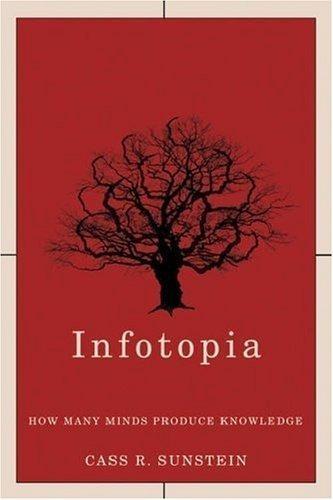
Infotopia: How Many Minds Produce Knowledge
by
Cass R. Sunstein
Published 23 Aug 2006
Note here Eric Raymond’s suggestion: “Given enough eyeballs, all bugs are shallow.”26 A Movement / Open source software has an extremely colorful history; it even involves a kind of social movement, with vivid personalities and a great deal of passion and commitment.27 The Free Software Foundation, a nonprofit organization, was started by Richard Stallman in 1985, the same year that Stallman invented the copyleft license; and Stallman, to 168 / Infotopia whom I shall return, has been a foundational figure for over two decades. An important moment in the movement occurred in 1991, when Linus Torvalds, a computer science graduate student at the University of Helsinki, started to do some interesting work on his personal computer.
…
By the middle of 2000, Linux ran more than a third of the servers that make up the web.”29 As of this writing, only about 2 percent of the Linux “kernel,” or core, is written by Torvalds himself, but he continues to exercise ultimate authority over the decision whether to incorporate new code.30 I have referred to Richard Stallman, a famous hacker and near celebrity who originated the GNU project; GNU is a free software operating system for which Stallman wrote the GNU General Public License, now the most public free software license. With his multiple achievements, Stallman has become a legendary figure within the movement.
…
With open source projects, human creativity will continue to ensure exciting and even barely imaginable innovations. A Brief Note on Copyright / There is an obvious relationship between the ideas that underlie open source software and the broader debates over the restrictions imposed by the copyright laws.50 The whole idea of copyleft, invented by Richard Stallman, is an effort to reduce people’s ability to limit the distribution and modification of software. We could easily imagine more general efforts to reduce the effects of the copyright laws; such efforts are in fact easy to find. Copyright laws create monopolies; they diminish access by many minds.

Creative Selection: Inside Apple's Design Process During the Golden Age of Steve Jobs
by
Ken Kocienda
Published 3 Sep 2018
This “crystal ball” demo was set in the technology landscape of the early 2000s, a time when dot-com boom startups were still in business, Microsoft was the undisputed leader in computing, the Netscape web browser was the hottest new technology, and Apple was an underdog. It was also a time when many Silicon Valley software companies started experimenting with free software and plans for turning a profit by developing software they wouldn’t charge their customers to use. This seemingly paradoxical corporate strategy had its roots with Richard Stallman, a renowned programmer and technology activist, a man who believed all software should be free. Stallman railed against companies like Microsoft and Apple, which sold software for money, but kept the source code, the software instructions written by programmers, as a proprietary trade secret.
…
If you wrote software based on code covered by the GPL, you were required to publish your software under the GPL as well. The expectation was that this would create a virtuous cycle in which coders were continuously building on each other’s efforts to the betterment of all, rich or poor, newbie or geek, programmer or end user. If you don’t work in the software industry, Richard Stallman might be one of the most influential people you’ve never heard of. Over the decades, free software has spread through the entire high-tech industry. His GPL drives the development of the Linux operating system, and Linux is the core software running on Android smartphones, in the data centers for Google, Amazon, Twitter, and Facebook, and on the majority of network servers of all kinds.
…
As its countermove, Netscape decided to publish its browser source code, in the hope that the freely available code might become the de facto standard for all internet-enabled apps. If it did, this might lead to technical support contracts, consulting deals, and other ways of making money not directly tied to web browsers. This “open source” strategy was a variation inspired by the free software movement but one Richard Stallman didn’t favor. Stallman wanted code to be free as a political and social good. His notion was for software to be “free as in freedom.”4 For Netscape, open source was an attempt to save the company from going under. It was making its source code “free as in beer.”5 The hope was to earn money by running the best beer bash.
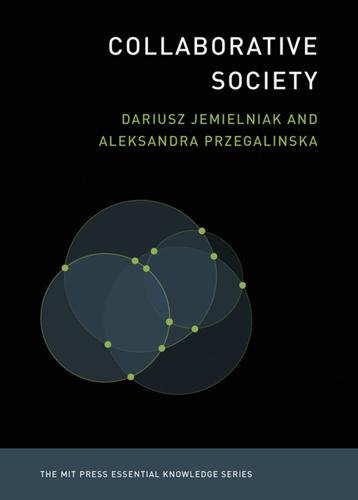
Collaborative Society
by
Dariusz Jemielniak
and
Aleksandra Przegalinska
Published 18 Feb 2020
Open collaboration is a form of organization and cooperation in which participants share a common goal but are loosely coordinated, yet together they create a product or service and make the final result available to anyone interested.1 Open collaboration communities often rely on common discussions, but interactions among their participants are usually optional and depend on the depth and complexity of the collaboration. The idea, which originated in free/open source development circles, is often linked to the GNU Manifesto.2 Written by Richard Stallman, the document postulated the creation of a Unix-compatible operating system that would be available, free of charge, to use, study, change, and redistribute.3 The idea worked well, and not just for an operating system: it currently reaches beyond programming—one example being in the open knowledge movement, which directly draws from free/open source culture and tradition.
…
In fact, in the beginning of open collaboration movements, many of them closely copied the principles and culture typical to free/open source software. These principles assume that the outcome of peer production should be free in the sense of not requiring any payment for use, but also free in the sense described in 1986 by Richard Stallman, when he explained the philosophy of the Free Software Foundation: free to use, free to study and change, and free to redistribute with or without changes.26 It is free in the sense of “free speech” as well as in the sense of “free beer.”27 These freedoms enable forking, which we can think of in visual, nontechnical terms as the way a river can go off (or change) course.28 This right to fork is important, as it actually helps the whole ecosystem: Let’s say we want to do things differently and better; we may try to persuade others to follow us.
…
Wellman, Networked: The New School Operating System (MIT Press, 2012). Chapter 2 1. S. S. Levine and M. J. Prietula, “Open Collaboration for Innovation: Principles and Performance,” Organization Science 25 (2013): 1414–1433. 2. We have a slight preference for the term “open source” rather than “free” software, even though Richard Stallman fiercely opposed the former and supported the latter (see https://perma.cc/MF3R-WLE9). In his view, “open source” relates to the way software is developed, rather than the social movement and purpose conveyed by the “free software” movement. Nevertheless, currently the term may be confusing as it is occasionally hijacked by adware or freemium programs, and can be also additionally confused with programs offered for free, but harvesting user data, even though the free software creators emphasized very clearly that it is about liberties, not price.
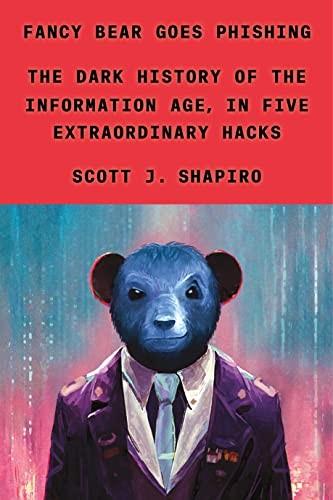
Fancy Bear Goes Phishing: The Dark History of the Information Age, in Five Extraordinary Hacks
by
Scott J. Shapiro
Paras also prepared the battlefield by launching a disinformation campaign. He opened fake accounts on Facebook and Reddit under a new name, OG_Richard_Stallman. Richard Stallman is the father of open-source software and the person whose account Robert Morris Jr. used to release his worm. Paras would use this handle when trying to extort money from particular DDoS victims (though he continued to use Anna-Senpai when posting on Hack Forums). Paras hoped to throw law enforcement off the trail by creating this imaginary hacker named OG_Richard_Stallman. It is probably no coincidence that Paras’s false-flag operation coincided with Russian intelligence actions in the DNC hacks.
…
Who needs HAL or Skynet with Mirai unopposed? The Botnets of August By the middle of September 2016, Mirai had beaten Poodle Corp, with crucial help from law enforcement. But the battle leading up to victory was ferocious. Mirai became operational on August 1. Its first attack came the next day. On August 2, Paras—using the name Richard Stallman—sent an extortion note to HostUS, a small DDoS protection company. Paras demanded a ten-Bitcoin payment to avoid its being DDoS-ed. When HostUS refused, Paras used Mirai to knock it off-line. On August 5, Paras put out more disinformation in a Hack Forums entry entitled “Government Investigating Routernets.”
…
Karger et al., “A Retrospective on the VAX VMM Security Kernel,” IEEE Transactions on Software Engineering, November 1991, 1147–65. a secret backdoor: Karger et al., “Retrospective,” 1159. expense of advertising and supporting the product: Karger et al., “Retrospective,” 1163. FOSS: For the locus classicus of FOSS, see Richard Stallman, “GNU Manifesto,” March 1985, http://ftp.math.utah.edu/pub/tex/bib/toc/dr-dobbs-1980.html#10(3): March 1985. For an excellent ethnography of the FOSS LINUX/Debian community, see Gabriella Coleman, Coding Freedom: The Ethics and Aesthetics of Hacking (Princeton, NJ: Princeton University Press, 2012).

The Open Revolution: New Rules for a New World
by
Rufus Pollock
Published 29 May 2018
The third stipulation that Openness permits is for share-alike, requiring that those who reuse work that has been freely shared must in turn share their own work Openly in the same way – and with a share-alike requirement in turn. In this way Openness cascades down the generations of creativity. Share-alike is most significant in areas where reuse is common. The concept of “share-alike” originated in the 1980s with the work of Richard Stallman in the building of software, where reuse is ubiquitous. His concern was that if he shared his work freely and Openly, others might take it and copyright it rather than sharing in their turn. Share-alike requirements solve this problem, and the beauty of the system is that it imposes no burden on those who are sharing.
…
Elements of Open sharing were widespread both in the academy and in the nascent information technology industries, especially software, but this was rarely driven by political conviction. Finally, in the 1980s and 1990s, the Open information movement appeared in embryonic form. If one were to look for a totemic moment similar to the publication of Carson’s Silent Spring, it would probably be Richard Stallman’s work at the Free Software Foundation. Whilst Carson exposed the harm done by pesticides, Stallman revealed the increasing threat posed by the way that more and more information was becoming proprietary. At first on a tiny scale, a community of coders and scientists, connected by personal computers and the rudimentary internet, gathered around a radical ideal, as they gradually worked out the ramifications of the difference between information and physical things.
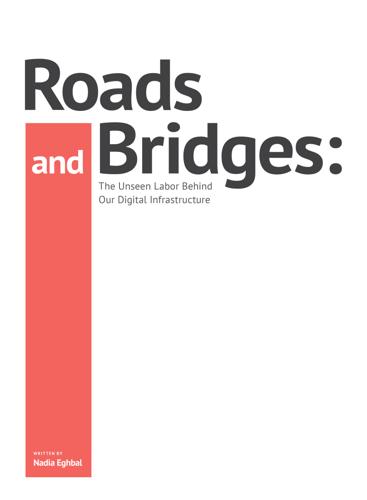
Roads and Bridges
by
Nadia Eghbal
And proprietary software is expensive, often costing hundreds of dollars and permitting the designated purchaser to use only that copy. Understandably, some computer scientists felt concerned about the closed and proprietary direction that software was taking, believing that it undermined the true potential of software. Richard Stallman, a programmer at the MIT Artificial Intelligence Laboratory, felt particularly strongly about the need for software to be free and modifiable. Over the next couple of years, as several of his colleagues began working on proprietary software projects, Stallman felt he could not ignore the situation any longer.
…
(The Spanish word libre—“free” as in freedom—is used to distinguish from gratis-“free” as in cost—in order to highlight that “free software” refers to the former.) OSS refers to Open Source Software only. Free software Software that is free to run for any purpose (commercial or non-commercial) as well as be studied, changed, and distributed. The term originated around 1983 from the work of computer scientist Richard Stallman, the GNU Project, and Free Software Foundation (founded 1985). GitHub A commercial platform for hosting code. GitHub launched in 2008 and is currently the most popular platform for people to host and collaborate on open source projects. (One can also host private code on GitHub.) GitHub helped standardize open source development practices and bring open source to a wider audience.
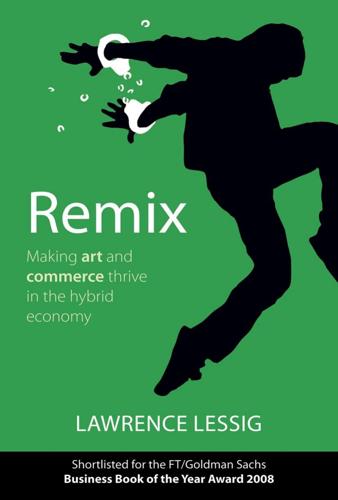
Remix: Making Art and Commerce Thrive in the Hybrid Economy
by
Lawrence Lessig
Published 2 Jan 2009
But you can’t get in trouble for not doing it.48 Finally, there was a norm about ownership: nobody owned Wikipedia exclusively. The content of Wikipedia got created under a copyright license that guaranteed it was always free for anyone to copy, and that any modifications had to be free as well. This “copyleft” license—the brainchild of Richard Stallman—set the final founding norm for this extraordinary experiment in collaboration. If you’re one of the seven people in the world who have not yet used Wikipedia, you might well wonder whether this experiment in collaboration can work. The answer is that it does, and surpris- 80706 i-xxiv 001-328 r4nk.indd 157 8/12/08 1:55:27 AM REMI X 158 ingly well—surprising even for Wikipedia’s founder, Jimmy Wales.
…
Consider just a few: 80706 i-xxiv 001-328 r4nk.indd 162 8/12/08 1:55:29 AM T W O EC O NO MIE S: C O MMERC I A L A ND SH A RING 163 • The code that built the Net came from a sharing economy. The software that built the original Internet was the product of free collaboration. Open-source, or free, software was distributed broadly to enable the servers and Internet protocols to function. The most famous of these projects was the GNU Project, which in 1983 was launched by Richard Stallman to build a free operating system, modeled upon the then dominant UNIX. For the first six years or so, Stallman and his loyal followers worked away at building the infrastructure that would make an operating system run. By the beginning of the 1990s, the essential part missing was the kernel of the operating system, without which the operating system as a whole could not run.
…
“I would ask all the members of the user groups, ‘What do you want to read about that isn’t already being covered in the major computer publications?’ The only thing they could think about at the time was free software.” So Young decided to learn something about free software. He took a train to Boston to sit down with Richard Stallman to “ask him where this stuff was coming from.” Young was astounded by what he found. “[Stallman] was using lines [like] ‘from engineers according to their skill to engineers according to their need.’ ” “I’m a capitalist,” Young recalls thinking, “and the Berlin wall had just fallen. I thought, I’m not sure this model is going to keep going.”
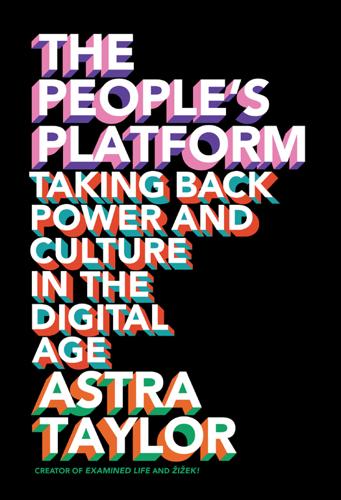
The People's Platform: Taking Back Power and Culture in the Digital Age
by
Astra Taylor
Published 4 Mar 2014
While we all know what “expensive” means, “free” has a fundamental ambiguity, an ambiguity central to the Internet. Free can mean something that no one can own, that belongs to all. It can also mean free in cost, like Socrates’s teachings in the streets of Athens for which he famously refused to take a fee. There’s “free” as in speech and “free” as in beer, as the famous software programmer Richard Stallman likes to say. In the digital world both kinds of free are heralded as the future. The Internet, as some techies point out, is nothing if not a copy-making machine, a place where replicating things and passing them along are effortless and essential, whether the file contains a short text message or a pornographic image or a movie that took me years to make.
…
A factory farmer or a freegan are not the only two positions to take.” Cohen is highlighting a value that has long been central to any progressive movement: respect for labor. From this angle, it’s clear that “copyleft,” as the free culture position on copyright is sometimes called, is not “left” in the traditional sense. As Richard Stallman told me, he designed copyleft to ensure the freedom of users to redistribute and modify copies of software. Freedom to tinker is the paramount value it promotes, but a left worthy of the name has to balance that concern with the demand for equality, for parity of wealth and redistribution of power.
…
Even those artists who have written eloquently on the fallacy of intellectual property, the ubiquity of creative influence, and the myth of originality—figures like Lewis Hyde, Jonathan Lethem, Cory Doctorow, and David Shields—reserve some, if not all, of their rights. “Who owns the words? Who owns the music and the rest of our culture?” asks Shields. “Reality cannot be copyrighted,” yet the book I quote from is. Though Richard Stallman encourages copying, he releases his writing under a no-derivatives license; he believes people should be allowed to modify all software, but he is not convinced the same holds for expressive works. While there are exceptions, most people whose creativity depends on being able to incorporate outside material tend to be sensitive to conflicting perspectives, intuitively aware of the “bargain” copyright is supposed to provide in its ideal form.34 Beyond a shadow of a doubt, we have lost sight of this equilibrium in recent decades.

Dreaming in Code: Two Dozen Programmers, Three Years, 4,732 Bugs, and One Quest for Transcendent Software
by
Scott Rosenberg
Published 2 Jan 2006
That world—an environment of geekish enthusiasms and cooperative ideals—experienced a sort of waking to self-consciousness in the 1990s. Programmers looked at one another across the network they had built, blinked, and realized that they shared a set of practices and philosophies different from those of the Microsoft-dominated personal-computing mainstream. They took their inspiration and tools from two central figures: Richard Stallman and Linus Torvalds. In 1985, Stallman, an eccentric MIT genius who was irate about the commercial software industry’s habit of locking up code, established the Free Software Foundation. It developed a special kind of software license that said you could have all the code you wanted, and reuse it, and incorporate it into new products—but anything you created with that code had to be covered, in turn, by the same licensing terms.
…
He had followed the rise of the open source movement in the late nineties; he found its ideas congenial, and even more important, he found its arguments persuasive. This was not an obvious or inevitable choice for someone whose career epitomized the triumph of the entrepreneurial software capitalist and whose fortune originated in the sale of shrink-wrapped programs. Back in the 1980s, in his Lotus days, Kapor had sat miserably in his office while Richard Stallman, the disheveled and cantankerous torchbearer of the free software movement, led a crowd of chanting picketers from the League for Programming Freedom in the street outside. They were protesting Lotus’s policies on software copyrights and “look-and-feel lawsuits” that tried to block other programmers from mimicking user interface features from Lotus programs.
…
Maybe Eric Raymond’s “The Cathedral and the Bazaar” had been wrong, and Linus’s Law (“‘Given enough eyeballs, all bugs are shallow”) didn’t transcend Brooks’s Law after all. Or perhaps OSAF, for all its transparency, had so far failed to meet Raymond’s requirement for success with a bazaar-style open source project—that it must recognize, embrace, and reward good ideas from outsiders. Richard Stallman, the godfather of free software, liked to say, “When people ask me when something will be finished, I respond, ‘It will be ready sooner if you help.’” OSAF welcomed volunteers and external contributions, but Chandler’s grand design ambitions and sluggish pace of delivery had made it hard for outsiders to pitch in.

Here Comes Everybody: The Power of Organizing Without Organizations
by
Clay Shirky
Published 28 Feb 2008
Prior to the 1980s, software was something that generally came free with a computer, and much of it was distributed with the source code. As software sales become a business on its own, however, the economic logic shifted, and companies began distributing only the software. One of the first people to recognize this shift was Richard Stallman. In 1980 Stallman was working in an MIT lab that had access to Xerox’s first-ever laser printer, the 9700. The lab wanted to modify the printer to send a message to users when their document had finished printing. Xerox, however, had not sent the source code for the 9700, so no one at MIT could make the improvement.
…
Linus Torvalds’s original promise for Linux seems small in retrospect, but stated baldly—“Let’s get a bunch of people all over the world to write incredibly complex software without anyone getting paid”—the proposal would have seemed utterly mad. (Many people treated Linux that way for years, in fact.) Richard Stallman’s more managed methods of creating software seemed better than Torvalds’s, because up to that point they had been better. In the early 1990s Torvalds’s proposal hit the forward edge of what social tools made plausible, and as the tools got better, the size of what was plausible grew. The social tools that the Linux community adopted were like a trellis for vines—they didn’t make the growth possible, but they supported and extended that growth in ways that let them defy gravity.
…
All the current examples we have of large-scale, long-lived creativity, like Wikipedia or Linux, are in the realm of intellectual property; Wikipedia and Linux and a million other co-created projects are, in an almost literal way, frozen ideas. What makes most such collaborative efforts work is copyright law, where some form of license is created that allows people to come together and share their work freely, without fear of having that work taken from them later. There are dozens of such licenses, like Richard Stallman’s original GPL, currently used by Linux and a host of other collaborative projects, or Creative Commons licenses, which allow the sharing of written work in an analogous manner. In its twenty-five years of existence, the GPL and its cousins have transformed software development, precisely because they provided assurance to groups of programmers who wanted to pool their efforts, but they are also transforming much of the rest of the software industry as well, because GPL-licensed tools have become such a large part of the ecosystem.
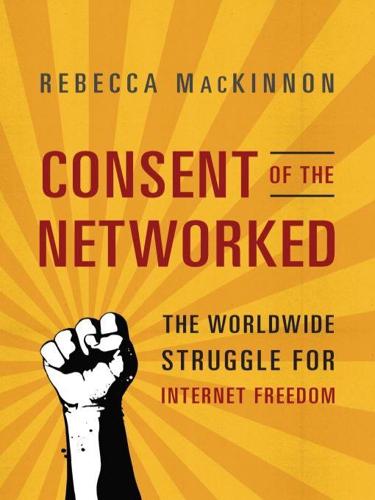
Consent of the Networked: The Worldwide Struggle for Internet Freedom
by
Rebecca MacKinnon
Published 31 Jan 2012
CHAPTER 2: RISE OF THE DIGITAL COMMONS 17 In his book The Wealth of Networks: Yochai Benkler, The Wealth of Networks (New Haven, CT: Yale University Press, 2007), 472. 18 The World Wide Web, invented two decades after the Internet: For Berners-Lee’s firsthand account, see Tim Berners-Lee, Weaving the Web: The Original Design and Ultimate Destiny of the World Wide Web (New York: HarperOne, 1999). 20 In 1989, the computer scientist Richard Stallman got the ball rolling: Though the distinction may seem arcane to nonprogrammers, there are important philosophical differences between developers of open-source software—a much broader set of people—and adherents of the free software movement. As Stallman puts it, “Open source is a development methodology; free software is a social movement.” See Richard Stallman, “Why Open Source Misses the Point of Free Software,” www.gnu.org/philosophy/open-source-misses-the-point.html.
…
Most Internet users around the world are unaware of this increasingly high-stakes fight over the future of Internet governance, a geopolitical battle with implications for the future political freedoms of all citizens. The free-software and open-source software communities are also key to the expansion and growth of the digital commons, upon which a great deal of both commercial and noncommercial activity now depends. In 1989, the computer scientist Richard Stallman got the ball rolling when he created the General Public License (GPL), which authorizes anybody to use a GPL-licensed software program as long as any copies or derivatives are also made available on the same terms. This license enabled software programmers to contribute computer code with the express purpose of sharing it with others, who can in turn build and improve on it, on the condition that the modifications and improvements remain part of the commons.

Come and Take It: The Gun Printer's Guide to Thinking Free
by
Cody Wilson
Published 10 Oct 2016
He patented the technology and co-founded a company to sell it by the name of 3D Systems. In the late eighties, Scott Crump pioneered a method for solid imaging based on the controlled layering of thermoplastic through a filament feed. The “Eureka!” story goes that he was inspired by his use of a hot-glue gun one afternoon. Around the same time, in 1984, Richard Stallman, a programmer from Harvard and MIT, was on a mission to offer computer users something entirely different: “free software.” “The word ‘free’ in our name does not refer to price,” he wrote in 1986. “It refers to freedom.” Users would be given the freedom to copy a program and redistribute it to their neighbors.
…
The room took to argument as Amir and I traded the microphone, fielding each inquiry and utterance with mounting enthusiasm. “I know this will sound crazy,” a young woman eventually deadpanned from amid the rows of attendees, “but I have a question that’s actually about Bitcoin.” The room broke into laughter. Seated for a speech later in the day, I stared at Richard Stallman’s shoeless feet. His misbuttoned shirt was taut across his gut. The paper program said he had invented the bulk of the operating system we know as Linux. From behind the podium he expounded on the virtues of compulsory education in free software while the anarchists grumbled in the back. Amir whispered to me, “The woman you stood with earlier was Birgitta Jonsdottir, Icelandic parliament.

Protocol: how control exists after decentralization
by
Alexander R. Galloway
Published 1 Apr 2004
Hacking 169 program, it was placed in the drawer for anyone to access, look at, and rewrite as they saw fit.”55 The limits of personal behavior become the limits of possibility to the hacker. Thus, it is obvious to the hacker that one’s personal investment in a specific piece of code can do nothing but hinder that code’s overall development. “Sharing of software . . . is as old as computers,” writes free software guru Richard Stallman, “just as sharing of recipes is as old as cooking.”56 Code does not reach its apotheosis for people, but exists within its own dimension of perfection. The hacker feels obligated to remove all impediments, all inefficiencies that might stunt this quasi-aesthetic growth. “In its basic assembly structure,” writes Andrew Ross, “information technology involves processing, copying, replication, and simulation, and therefore does not recognize the concept of private information property.”57 Commercial ownership of software is the primary impediment hated by all hackers because it means that code is limited—limited by intellectual property laws, limited by the profit motive, limited by corporate “lamers.”
…
Even Kevin Mitnick, a hacker maligned by some for his often unsavory motivations, admits that the code itself has a higher priority than any commercial motivation: You get a better understanding of the cyberspace, the computer systems, the operating systems, how the computer systems interact with one another, that basically, was my motivation behind my hacking activity in the past, it was just from the gain of knowledge and the thrill of adventure, nothing that was well and truly sinister such as trying to get any type of monetary gain or anything.58 55. Levy, Hackers, p. 53. In his 1972 Rolling Stone article on the game, Stewart Brand went so far as to publish Alan Kay’s source code for Spacewar right alongside his own article, a practice rarely seen in popular publications. See Brand, “SPACEWAR,” p. 58. 56. Richard Stallman, “The GNU Project,” available online at http://www.gnu.org/gnu/ thegnuproject.html and in Chris Dibona et al, eds., Open Sources: Voices from the Open Source Revolution (Sebastopol, CA: O’Reilly, 1999). 57. Ross, Strange Weather, p. 80. 58. From a telephone interview with Kevin Mitnick, cited in Taylor, Hackers, p. 57.
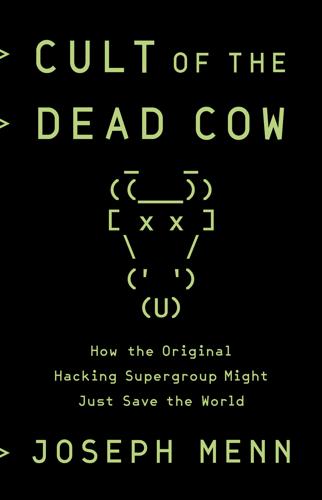
Cult of the Dead Cow: How the Original Hacking Supergroup Might Just Save the World
by
Joseph Menn
Published 3 Jun 2019
Barlow’s introduction to the rougher side of the internet came in late 1989, when he participated in a WELL group chat about the nature of hacking that was curated by Harper’s magazine, which printed excerpts. Among those typing in facts and opinions over the course of a week were open-source software crusader Richard Stallman, 2600 editor Eric Corley (under his post-indictment handle, Emmanuel Goldstein), and Cliff Stoll, the Berkeley astronomer who had traced hackers working for Russia and chronicled the work in his book The Cuckoo’s Egg. Most of the drama came from two brash young New York hackers identifying themselves as Acid Phreak and Phiber Optik.
…
It was an unstructured show-and-tell and social hour, with people moving from table to table. After the meetings, smaller groups would head into the Square or to MIT, where they could monkey around with pay phones, explore the tunnels, or abuse the internet terminals in the lab. MIT was home to open-source fanatic Richard Stallman, who didn’t believe in passwords, and the same ethos contributed to what would otherwise have to be seen as very poor security practices. Among them was the lightly guarded secret that any lab terminals would grant internet access to the username “root” and the password “mrroot,” later upgraded to “drroot.”

The Digital Party: Political Organisation and Online Democracy
by
Paolo Gerbaudo
Published 19 Jul 2018
Rousseau is based on Movable Type, a proprietary content management system written in Perl, first released by the company Six Apart in 2001. This use of proprietary software, which contradicts the Five Star Movement advocacy of Open Source software, has been criticised by many activists, including American free software activist Richard Stallman. It is impossible to know for sure what is the actual content of the software, given that it has been shrouded in some mystery. According to former employee at Casaleggio Marco Canestrari, who was involved in writing some of the initial lines of its code, Rousseau is fundamentally a ‘fork’ of the version 4.2 of Movable Type released in 2008, which now cannot be updated anymore, having been modified internally.247 This ‘deprecated’ practice is one of the reasons for the serious security breaches that have plagued this platform, as seen in a streak of hacker attacks.
…
This risk has been most glaringly illustrated by the case of the Five Star Movement, where, because of poor encryption, hackers were able to break into the database. The fear is also that the party internal staff may analyse members’ voting history and perhaps even ‘profile’ those voters that are not in line with the party leadership. More generally, some people, including the German Computer Chaos Club and free software activist Richard Stallman, question the very desirability of online democracy because it does not guarantee the same anonymity that is available with physical ballots. Although the more radical cypherpunk-oriented people will continue to distrust digital democracy, end-to-end encryption systems, such as the one used by Agora Voting, provide a reasonable degree of security against these risks.

The Future of the Internet: And How to Stop It
by
Jonathan Zittrain
Published 27 May 2009
Put into our terms, accessibility is a core value. When the free software approach works, it helps to expand the audiences capable of building software, and it increases the range of outputs the system generates. While generativity has some things in common with the free software approach, it is not the same. Free software satisfies Richard Stallman’s benchmark “four freedoms”: freedom to run the program, freedom to study how it works, freedom to change it, and freedom to share the results with the public at large.9 These freedoms overlap with generativity’s four factors, but they depart in several important respects. First, some highly generative platforms may not meet all of free software’s four freedoms.
…
More self-consciously encyclopedic models emerged nearly simultaneously from two rather different sources—one the founder of the dot-org Free Software Foundation, and the other an entrepreneur who had achieved dot-com success in part from the operation of a search engine focused on salacious images.19 Richard Stallman is the first. He believes in a world where software is shared, with its benefits freely available to all, where those who understand the code can modify and adapt it to new purposes, and then share it further. This was the natural environment for Stallman in the 1980s as he worked among graduate students at the Massachusetts Institute of Technology, and it parallels the environment in which the Internet and Web were invented.
…
There are thousands of software patents, and patent infringement, unlike copyright, does not require a copying of the original material: so long as someone else already came up with the idea, the new work is infringing. With copyright, if someone miraculously managed independently to come up with the tune to a Beatles song, that tune would not be infringing the Beatles’ copyright, since it did not copy the song—it was independently invented. It is this virtue of copyright law that allowed Richard Stallman to begin the free software movement’s effort to reproduce Unix’s functionality without infringing its copyright by simply creating new code from scratch that acts the same way that Unix’s code does. Not only does patent not have such a limitation, but it also applies to the abstract concepts expressed in code, rather than to a specific set of code.69 Thus, someone can sit down to write some software in an empty room and, by that act, infringe multiple patents.

Coders: The Making of a New Tribe and the Remaking of the World
by
Clive Thompson
Published 26 Mar 2019
That’s how people were going to learn, right? And that’s how these inventions and miracles they were crafting were going to spread to the outside world. This was the ethic that later morphed into “free and open source software”—the act of openly publishing your code and letting anyone repurpose and use it. Famous MIT hackers like Richard Stallman were incensed at corporations that kept their source code secret; he was livid when a group of MIT hackers left to found a firm that produced LISP computers, sold them to MIT, yet wouldn’t openly share the code. Stallman responded by launching the free-software movement and beginning work on a full operating system and legal apparatus that enshrined everyone’s right to inspect and tinker with the code.
…
The first version of this culture clash emerged back at MIT in the ’60s and ’70s, when the original generation of hackers began excitedly playing with the university’s machines. Those hackers had an ethic of openness: If you wrote a cool algorithm or bit of code, you shared it with everyone else. If you didn’t show off your code to others and vice versa, how would everyone learn? “We shared programs to whoever wanted to use them, they were human knowledge,” Richard Stallman, one of MIT’s most prolific hackers, later recalled. Indeed, the MIT coders were so communitarian that they didn’t even put their names on code they’d written. “Signing code was thought of as arrogant,” recalls Brewster Kahle, who arrived at the lab in 1980. “It was all for building the machine.
…
obstruction of justice charge: Kim Zetter, “Barrett Brown Sentenced to 5 Years in Prison in Connection to Stratfor Hack,” Wired, January 22, 2015, accessed August 19, 2018, https://www.wired.com/2015/01/barrett-brown-sentenced-5-years-prison-connection-stratfor-hack. most prolific hackers, later recalled: Richard Stallman, “My Lisp Experiences and the Development of GNU Emacs,” Gnu.org, transcript of speech from October 28, 2002, page last updated April 12, 2014, accessed August 19, 2018, https://www.gnu.org/gnu/rms-lisp.en.html. “ridiculous concepts as property rights”: Levy, Hackers, 95, Kindle. programmers could learn from it: Levy, Hackers, 436–53, Kindle.
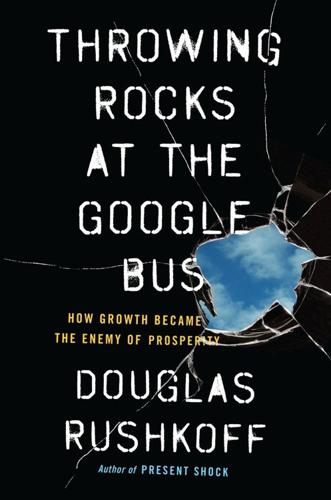
Throwing Rocks at the Google Bus: How Growth Became the Enemy of Prosperity
by
Douglas Rushkoff
Published 1 Mar 2016
Some have been around for centuries, others have risen in response to economic and environmental crises, and still others have been inspired by the distributive bias of digital networks. From the seed-sharing commons of India to the Potato Park of Peru, indigenous populations have been maintaining their lands and managing biodiversity through a highly articulated set of rules about sharing and preservation. From informal rationing of parking spaces in Boston to Richard Stallman’s General Public License (GPL) for software, new commons are serving to reinstate the value of land and labor, as well as the ability of people to manage them better than markets can. In the 1990s, Elinor Ostrom, the American political scientist most responsible for reviving serious thought about commoning, studied what specifically makes a commons successful.
…
For implanting the dream of how a digital society and economy might function, I thank Internet cultural pioneers including Howard Rheingold, Mark Pesce, David Pescovitz, Mark Frauenfelder, Xeni Jardin, Cory Doctorow, John Barlow, Jaron Lanier, RU Sirius, Andrew Mayer, Richard Metzger, Evan Williams, everyone on the Well, Richard Stallman, George P’or, Neal Gorenflo, Marina Gorbis, and Michel Bauwens. For leading digital enterprises in ways worth writing about, thanks to Scott Heiferman, Ben Knight, Zach Sims, Slava Rubin, the Robin Hood Cooperative, Enspiral, and Jimmy Wales. For sharing with me some of the perils of growth-based business and being open to discuss alternative possibilities, I thank Frank Cooper, Gerry Laybourne, Sara Levinson, Bonin Bough, Jon Kinderlerer, William Lohse, Ken Miller, and Judson Green.

The Pirate's Dilemma: How Youth Culture Is Reinventing Capitalism
by
Matt Mason
It's no accident that one of the richest veins of rave culture in America, an anything-goes culture also based on the idea of giving people options instead of rules, is in Silicon Valley. The Homebrew Computer Club's revenge on Microsoft was the open-source movement. While many agreed with Gates and saw software as intellectual property, others didn't, and continued to develop their own free software. In 1983, a hacker/activist named Richard Stallman founded the Free Software Foundation, writing a new operating system that was as open as possible, arguing, “Free software is a matter of liberty, not price. To understand the concept, you should think of ‘free’ as in ‘free speech,’ not as in ‘free beer.’” [FN: Open-source culture has since developed free beer, too.
…
John Markoff, What the Dormouse Said (New York: Penguin, reprint edition 2006). Bill Gates, “An Open Letter to Hobbyists,” February 3, 1976. http://www.blinkenlights.com/classiccmp/gateswhine.html. R. U. Sirius (aka Ken Goffman) and Dan Joy, Counterculture Through the Ages (New York: Villard, 2004), p. 353. Richard Stallman, “The Free Software Definition,” Free Software Foundation. http://www.gnu.org/philosophy/free-sw.html. For more on Vores Ø1 and other free beers, visit freebeer.org. Brian Bergstein, “Microsoft Offers Cash for Wikipedia Edit,” Newsvine.com, January 23, 2007. http://www.newsvine.com/_news/2007/01/23/534218-microsoft-offers-cash-for-wikipedia-edit.
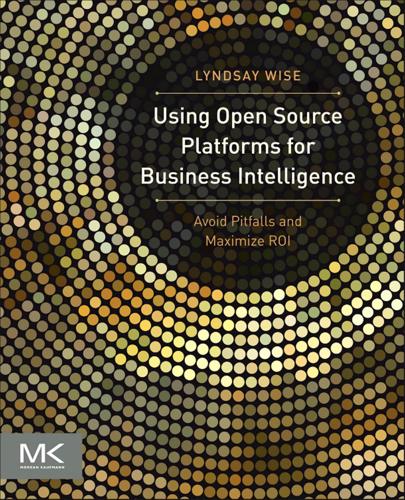
Using Open Source Platforms for Business Intelligence: Avoid Pitfalls and Maximize Roi
by
Lyndsay Wise
Published 16 Sep 2012
The GNU General Public License (GPL) is a body that was created with the goal of peer production and collaboration through the ability to share free software, while preserving the rights of the user and not the creator.3 In essence, the key difference between this outlook and that of proprietary offerings is whose rights are protected. In his article, “Why Software Should Not Have Owners,”4 Richard Stallman, activist of free software and founder of the GNU Project, discusses the philosophy of providing developers with free software. Stallman looks at the concept of freedom and its importance in relation to information and the difference between OS and free software. But this distinction causes extra confusion; after all, in Chapter 1, one of the determinations of OS was the fact that it is free.
…
Within the camp of OSBI, although some developers may feel attached to the concept of free software, the reality is that most BI-related OS 1 http://www.pcmag.com/encyclopedia_term/0,2542,t5proprietary1software&i549869,00.asp Developed by the Northwest Regional Educational Laboratory, Portland, Oregon. http://www.netc.org/openoptions/ background/history.html#overview 3 Developed by the Northwest Regional Educational Laboratory, Portland, Oregon. http://www.netc.org/opneoptions/ background/history.htm/#overview 4 Richard Stallman. http://www.gnu.org/philosophy/why-free.html 2 16 CHAPTER 2 OS overview projects, from the developer perspective, are based on the premise of developing solutions with the goal of continuous improvement and developing the best possible BI. There is a focus on community development or vendors enhancing solutions based on use and customer feedback.
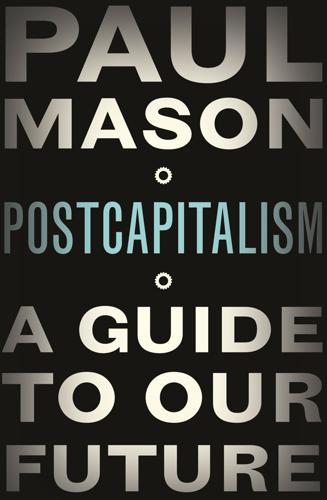
Postcapitalism: A Guide to Our Future
by
Paul Mason
Published 29 Jul 2015
Creativity can be a social contribution, but only in so far as society is free to use the results. Extracting money from users of a program by restricting their use of it is destructive because the restrictions reduce the amount and the ways that the program can be used. This reduces the amount of wealth that humanity derives from the program.18 That was Richard Stallman in The GNU Manifesto, which launched the free software movement in 1985. Stallman had been irked not just by Microsoft but by the attempt by makers of much more powerful business computers to ‘own’ a rival operating system called Unix. His plan was to write a free version of Unix, called GNU, distribute it for free, and invite enthusiasts to collaborate on improving it – with the proviso that nobody could own or make money out of it.
…
The success of Open Source software is startling. It demonstrates that new forms of property ownership and management become not just possible but imperative in an information-rich economy. It shows there are things about information goods that even monopolies can’t monopolize. According to standard economics a person like Richard Stallman should not exist: he is not following his self-interest but suppressing it in favour of a collective interest that is not just economic but moral. According to market theory, it is those motivated by the pursuit of private property who should be the more efficient innovators. According to mainstream economics, large corporations such as Google should be doing what Bill Gates did: making a land-grab for everything and trying to destroy Open Source software.
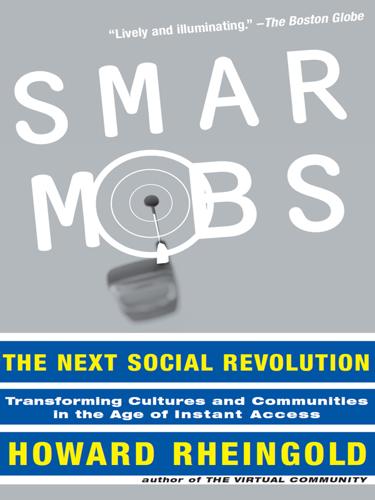
Smart Mobs: The Next Social Revolution
by
Howard Rheingold
Published 24 Dec 2011
At the same time, many of the early AI researchers were leaving for private industry to get involved in the techno-bubble of the time, the commercial AI boom and eventual bust. One holdout at MIT, deprived of his beloved programming environment, resistant to the commercialization of what he considered public property by AT&T and Microsoft, was Richard Stallman. Stallman vowed to write an OS that would be as portable and open as Unix, but which would be licensed in a way that would maintain its status as public goods. Stallman, founder of the Free Software Foundation, started creating GNU—a recursive acronym that stands for “GNU’s Not Unix.” Stallman, who owns little property and has no home other than his office, devoted himself thereafter to what he called “free software” (and emphasized that he meant “free as in free speech, not free beer”).57 Stallman hacked the legalities of the copyright system as well as created the first source code for a free OS.
…
Ritchie, “The Evolution of the Unix Time-Sharing System,” AT&TBell Laboratories Technical Journal 63 (October 1984): 15771593. 54. Nick Moffit, “Nick Moffit’s $7 History of Unix,” <http://crackmonkey.org/unix.html > (29 January 2002). 55. Ritchie, “The Evolution of the Unix Time-Sharing System.” 56. Moffit, “Nick Moffit’s $7 History of Unix.” 57. Richard Stallman, “The Free Software Definition,” The GNU Project, Free Software Foundation, 2000, <http://www.gnu.org/philosophy/free-sw.html> (17 June 2001). 58. Ibid. See also: Michael Stutz, “Freed Software Winning Support, Making Waves,” Wired News, 30 January 1998, <http://www.wired.com/news/technology/0,1282,9966,00.html > (5 February 2002). 59.
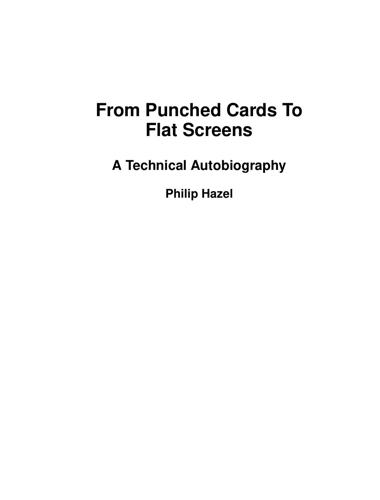
From Punched Cards To Flat Screens: A Technical Autobiography
by
Philip Hazel
Published 11 Aug 2017
Both Postfix and qmail were released at much the same time as Exim. This was a repeat of what had happened when I was working on music typesetting. Exim was initially released under a locally-written licence, but this was changed to the GNU General Public Licence (GPL) after I received a request for this from Richard Stallman. Growth in the use of Exim I was quite surprised how quickly Exim spread without the use of any serious advertising. A mailing list was soon needed. I was able to create one on the University’s list system, but this required manual maintenance, because that system was designed for lists of designated people, not for arbitrary, selfmanaged subscriptions.

Platform Revolution: How Networked Markets Are Transforming the Economy--And How to Make Them Work for You
by
Sangeet Paul Choudary
,
Marshall W. van Alstyne
and
Geoffrey G. Parker
Published 27 Mar 2016
And in some arenas, enhanced transparency, perhaps under government mandate, can powerfully supplement or even replace traditional forms of regulation, reducing the costs and inertia associated with government intervention and encouraging innovation.55 For example, mandated disclosures of food nutrition data, auto safety ratings, and the energy efficiency of appliances have helped millions of consumers to make wiser choices and encouraged companies to improve the quality of their products.56 Grossman’s emphasis on the power of transparency to enforce high community standards of behavior is particularly relevant in an age driven by information. An interesting analogy can be drawn with the ideas promulgated by Richard Stallman, the programmer–activist who is a leader of the “free software” movement. Stallman points out that one of the key virtues of free (or open source) software is that anyone can inspect the code and see what it does. Of course, only experts are likely to do this. But those who take the opportunity will be in a position to offer an informed judgment about the virtues and vices of the program, and, when necessary, to alert the general public to the problems they detect.
…
The social impact of mandated transparency rules has been thoroughly analyzed by three experts from Harvard’s Kennedy School of Government; see Archon Fung, Mary Graham, and David Weil, Full Disclosure: The Perils and Promise of Transparency (New York: Cambridge University Press, 2007). 57. See, for example, Richard Stallman, “Why Open Source Misses the Point of Free Software,” GNU Operating System, Free Software Foundation, http://www.gnu.org/philosophy/open-source-misses-the-point .en.html. 58. Carlota Perez, Technological Revolutions and Financial Capital: The Dynamics of Bubbles and Golden Ages (Cheltenham, UK: Edward Elgar, 2003). 59.

Nomad Citizenship: Free-Market Communism and the Slow-Motion General Strike
by
Eugene W. Holland
Published 1 Jan 2009
But such expertise is not an absolute require ment to participate: in principle, anyone could notice and report a problem with a FOSS program, thereby mobilizing any number of peer program mers to debug the program and solve the problem; moreover, someone without any expertise at all could propose the addition of some desirable feature to an existing program, or indeed the creation of an entirely new program, to which expert programmers would then respond (either by writing code for the new feature or program or declaring it impossible). Although Richard Stallman started programming elements of what would become the GNU-Linux system in the mid-1980s, his most im portant contribution was to devise and institute the system of cooperative peer production that would become the hallmark of the FOSS movement. (He was awarded a MacArthur Fellowship in 1990.)
…
The third distinctive feature of the new system of production follows directly from the second: FOSS peer production is commons based, meaning that FOSS products cannot be privately owned; anyone can use then, and anyone can improve them. The General Public License (also known colloquially as copyleft), which was developed for the Free Software Foundation by Richard Stallman and Eben Moglen, assures that FOSS cannot become private property and remains instead a Common Good from which anyone may benefit and to which anyone may contribute (if she is able). This Internet-mediated intellectual commons is a key feature of the peer-production system, and we will return to it later.
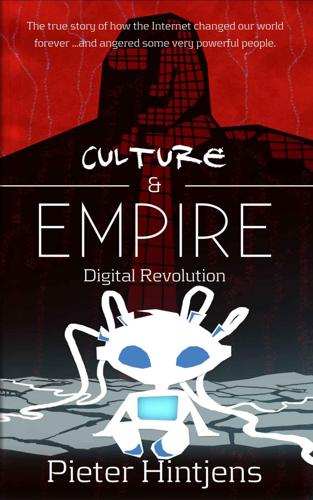
Culture & Empire: Digital Revolution
by
Pieter Hintjens
Published 11 Mar 2013
Two generations from now, the political structure of nation-states will be as quaint as medieval city-states, shires, and dukedoms. Just as with the Corn Laws in nineteenth-century Britain, the injustices of the counter-revolution are driving a generation to political activism. Perhaps the first and most significant digital activist was Richard Stallman, who in 1989 nailed the GNU General Public License (GPL) to the church door. I'll come back to Stallman's story in “Magic Machines”. Today, activists across the world are occupying the squares and streets of our cities, demanding an end to crony politics. I started to decrypt and document the dynamics of the digital revolution and counter-revolution in 1999, and then in 2005 took over as president of the Foundation for a Free Information Infrastructure (FFII), a European activist network that fought software patents.
…
The second element is what I consider one of the key technological developments of the twentieth century digital revolution, which was a new private contract for collaborative development called the GNU General Public License, or GPL. It was this document, this license, that finally solved the software crisis. I doubt that Richard Stallman, the man behind it, had such lofty goals. As far as I can tell from his writings at the time, he simply wanted to prevent volunteer efforts -- quite common in the software sector since its first days -- from being converted into closed commercial products, locking out the original contributors.

Dawn of the New Everything: Encounters With Reality and Virtual Reality
by
Jaron Lanier
Published 21 Nov 2017
Chuck was and remains a demon-level programmer. Fred Brooks had long ago observed, in his classic book The Mythical Man-Month, that programmers varied enormously in their powers. A single great programmer could often outrun a whole building of very good programmers. The best ones were legends. Bill Joy, Richard Stallman, Andy Hertzfeld3 … Was I ever in their league? Maybe briefly, early on, when I programmed Moondust. But Chuck was beyond doubt one of the greats of all time. Chuck, with dozens of DataGlove prototypes pinned to a wall in the background. Photographs by Ann Lasko. Chuck had a genial lumberjack vibe, exuding casual but devastating brilliance.
…
It was one of the progenitors of MIT’s influential Media Lab, which would come into existence a few years later. This is how I met Marvin Minsky, who became perhaps the sweetest and most generous of my mentors. I’ve described a few things that happened while I lived in Cambridge in my earlier books, like becoming lost in Marvin’s copiously disordered home and arguing with Richard Stallman about the dawn of free software. I won’t repeat those stories here, but I would like you to read what I wrote about Marvin on the day he died in 2016 (this was for the tribute on John Brockman’s edge.org): The last time I saw Marvin, just a few months ago, he was hanging out in his wonderful house, front door unlocked, students dropping by unannounced.

Hacker, Hoaxer, Whistleblower, Spy: The Story of Anonymous
by
Gabriella Coleman
Published 4 Nov 2014
Over seven thousand individuals logged onto AnonOps’ IRC channel, #operationpayback, to lend a helping hand, cheer, or at the very least, simply spectate. Seven thousand users in one channel remains the largest single IRC human congregation ever.5 It was a “mass demo against control,” as free software hacker Richard Stallman described the event in a Guardian editorial.6 In the month of December alone, LOIC was downloaded 116,988 times, far more than the earlier DDoS campaigns.7 While only a fraction of those actually connected to the Anonymous hive, interest in the tool was undoubtedly fueled by reporting about Anonymous’s activities.
…
Martin Beckford, “Sarah Palin: Hunt WikiLeaks Founder like al-Qaeda and Taliban Leaders,” telegraph.co.uk, Nov. 30, 2010. 4. Kathryn Jean Lopez, “On This Sunday Outrage,” nationalreview.com, Nov. 28, 2010. 5. At the time, statistics were available at http://irc.netsplit.de/networks/top10.php and http://searchirc.com/channel-stats. 6. Richard Stallman, “The Anonymous WikiLeaks Protests Are a Mass Demo Against Control,” theguardian.com, Dec. 17, 2010. 7. For precise figures, see Molly Sauter, The Coming Swarm: DDOS Actions, Hacktivism, and Civil Disobedience on the Internet (London: Bloomsbury Academic, 2014). 8. Noam Cohen, “Web Attackers Find a Cause in WikiLeaks,” nytimes.com, Dec. 9, 2010. 9.

Producing Open Source Software: How to Run a Successful Free Software Project
by
Karl Fogel
Published 13 Oct 2005
The suppliers clamped down, either denying users access to the code that ran their machines, or insisting on non-disclosure agreements that made effective sharing impossible. Conscious resistance As the world of unrestricted code swapping slowly faded away, a counterreaction crystallized in the mind of at least one programmer. Richard Stallman worked in the Artificial Intelligence Lab at the Massachusetts Institute of Technology in the 1970s and early '80s, during what turned out to be a golden age and a golden location for code sharing. The AI Lab had a strong "hacker ethic",[3] and people were not only encouraged but expected to share whatever improvements they made to the system.
…
For that, you'll need to hire a lawyer or be one.[87] Terminology In any discussion of open source licensing, the first thing that becomes apparent is that there seem to be many different words for the same thing: free software, open source, FOSS, F/OSS, and FLOSS. Let's start by sorting those out, along with a few other terms. free software Software that can be freely shared and modified, including in source code form. The term was first coined by Richard Stallman, who codified it in the GNU General Public License (GPL), and who founded the Free Software Foundation (fsf.org) to promote the concept. Although "free software" covers the same set of software as "open source", the FSF, among others, prefers the former term because it emphasizes the idea of freedom, and the concept of freely redistributable software as primarily a social movement rather than a technical one.

Collaborative Futures
by
Mike Linksvayer
,
Michael Mandiberg
and
Mushon Zer-Aviv
Published 24 Aug 2010
Within the technological sphere, none is as cogent in informing and driving contemporary collaboration as the Free So ware movement, which provides much of the nuts and bolts immediate precedent for the kinds of collaborations we are talking about—and o en provides the virtual nuts and bolts of these collaborations! The story goes something like this: Once upon a time all so ware was open source. Users were sent the code, and the compiled version, or sometimes had to compile the code themselves to run on their own specific machine. In 1980 MIT researcher Richard Stallman was trying out one of the first laser printers, and decided that because it took so long to print, he would modify the printer driver so that it sent a notice to the user when their print job was finished. Except this so ware only came in its compiled version, without source code. Stallman got upset—Xerox would not let him have the source code.

Multitude: War and Democracy in the Age of Empire
by
Michael Hardt
and
Antonio Negri
Published 1 Jan 2004
WIPO began by focusing almost exclusively on protecting the intellectual property of the wealthiest countries, in the form of patents and copyrights, but has progressively devoted more attention to the “emerging issues” in intellectual property that are more important to the poor countries, such as the protection of traditional knowledges and genetic resources and access to affordable pharmaceutics. 102 See Lawrence Lessig, The Future of Ideas: The Fate of the Commons in a Connected World (New York: Vintage, 2002); Richard Stallman, Free Software, Free Society, ed. by Joshua Gay (Cambridge: Free Software Society, 2002); and Chris DiBona, Sam Ockman, and Mark Stone, eds., Opensources: Voices from the Open Source Revolution (Cambridge: O’Reilly, 1999). 103 Karl Marx, Economic and Philosophic Manuscripts in Early Writings, trans.
…
For a critique of the World Bank reports on poverty, see Paul Cammack, “Attacking the Poor,” New Left Review, 2nd ser., no. 13 (January--February 2002): 125-34. 100 See Joseph Stiglitz, “Dealing with Debt: How to Reform the Global Financial System,” Harvard International Review 25, no. 1 (Spring 2003): 54-59; Kunibert Raffer, “What’s Good for the United States Must Be Good for the World: Advocating an International Chapter 9 Insolvency,” in From Cancun to Vienna: International Development in a New World (Vienna: Bruno Kreisky Forum, 1993), 64-74; and Ann Pettifor, “Resolving International Debt Crises—The Jubilee Framework for International Insolvency,” http://www.jubilee2000uk.org/analysis/reports/jubilee=_framework.html. 101 Ignacio Ramonet, “Désarmer les marchés,” Le monde diplomatique (December 1997): 1. 102 See Heikki Patomäki, Teivo Teivainen, and Mika Rönkkö, Global Democracy Initiatives, 161-78. 103 Lawrence Lessig makes a similar recommendation in The Future of Ideas, 249-61. 104 See Jessica Litman, “War Stories,” Cardozo Arts and Entertainment Law Journal 20 (2002): 337-59. 105 See Richard Stallman, Free Software, Free Society (Cambridge, MA: Free Software Society, 2002). 106 “Copyleft” is a similar alternative in which the choices are fixed: works can be reproduced for noncommercial use on the condition that the author is credited. On the Creative Commons, see Lawrence Lessig, Free Culture (New York: Penguin, 2004).
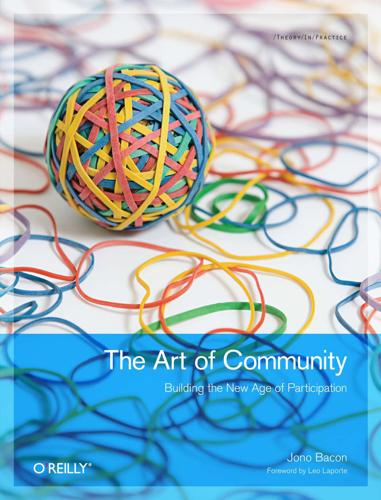
The Art of Community: Building the New Age of Participation
by
Jono Bacon
Published 1 Aug 2009
All mistakes are acceptable under the premise that you learn from them. As you continue to build more and more buzz, you will make fewer mistakes and create more successes as you bring people to your community. * * * [3] No, he is not my uncle. [4] For an example of inflated speaking requirements, see Richard Stallman’s at https://secure.mysociety.org/admin/lists/pipermail/developers-public/2011-October/007647.html. Chapter 8. Measuring Community “Learning without thought is labor lost.” —Confucius Great community leadership requires accepting the volatility of community. Volunteer communities are a bubbling pot of varying personalities, commitments, skills, and experiences.
…
In the Free Software world, one of the most notable cases of dictatorship was the choice of the third version of the GNU General Public License, perhaps the software license in most widespread use by Free Software projects (including Linux). Years of discussion went into this license, including intense meetings and negotiations with representatives of companies and software projects of all sizes. Yet in the end, someone had to make a decision, and that person was the illustrious president of the Free Software Foundation, Richard Stallman. Although the dictators in these communities are typically the original founders of the community, this does not mean they don’t lean on the community for help and support in judging contributions to the project. Typically these leaders will handpick trusted and reliable members to lend a hand.
…
When I organized the Freeware Summit (later known as the Open Source Summit) in 1998, it was because I recognized that there were multiple communities like that, that their leaders had never met in person, and would benefit from talking about common problems and shaping a common story. And being a media company, we organized a press conference at the end of the day to get that story out. And sure enough, two months later, Linus Torvalds was on the cover of Forbes, with full-page pictures inside of Larry Wall, Richard Stallman, Brian Behlendorf, and others. Social media is about community, about the stories that tie those communities together, and about tools to amplify the connections between them. I was doing that long before I got on Twitter or Facebook. Which social media networks really captured your interest first?

Team Geek
by
Brian W. Fitzpatrick
and
Ben Collins-Sussman
Published 6 Jul 2012
We watched him in television commercials. We went to see silly movies where he played basketball with cartoon characters. He was a star, and every kid on every court practicing hoops secretly wished to grow up and follow his path. Programmers have that same instinct—to find idols and worship them. Linus Torvalds, Richard Stallman, Bill Gates—all heroes who changed the world with heroic feats. Linus wrote Linux by himself, right? Beware of the natural instinct to idolize things. Actually, Linus just wrote the beginnings of a proof-of-concept Unix-like kernel, and showed it to an email list. That was no small task, and it was definitely an impressive achievement, but it was just the tip of the iceberg.
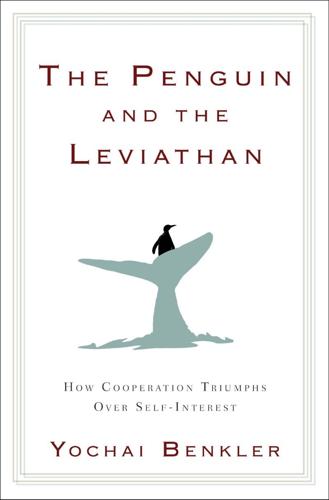
The Penguin and the Leviathan: How Cooperation Triumphs Over Self-Interest
by
Yochai Benkler
Published 8 Aug 2011
It might sound to you like the domain of geeks and hackers, but in reality if you ever visit Google, Amazon, Facebook, or the Wall Street Journal online, you are using free or open-source software (these sites run on GNU/Linux operating system, the Apache web server software, or both). As the founder of free software, Richard Stallman, put it, free software is not “free” as in “free beer,” but as in “free speech,” meaning that it is available to anyone to write and rewrite, as well as use. In the 1980s, when Stallman introduced the concept, it looked and sounded like a hippie holdover. Software should be a communal resource, open to all, was the idea, and to make it so, people could develop software and then license it to everyone under a license that allowed anyone who wanted to do so to make copies, distribute them, even sell them, all without any obligation to the original author.

Beautiful Architecture: Leading Thinkers Reveal the Hidden Beauty in Software Design
by
Diomidis Spinellis
and
Georgios Gousios
Published 30 Dec 2008
GNU Emacs: Creeping Featurism Is a Strength Jim Blandy Principles and properties Structures ✓ Versatility ✓ Module Conceptual integrity Dependency ✓ Independently changeable Process Automatic propagation Data access Buildability ✓ Growth accommodation ✓ Entropy resistance I use Emacs, which might be thought of as a thermonuclear word processor. It was created by Richard Stallman; enough said. It is written in Lisp, which is the only computer language that is beautiful. It is colossal, and yet it only edits straight ASCII text files, which is to say, no fonts, no boldface, no underlining…. If you are a professional writer—i.e., if someone else is getting paid to worry about how your words are formatted and printed—Emacs outshines all other editing software in approximately the same way that the noonday sun does the stars.
…
Some years of contributing to Free Software, in particular KDE, taught him to program, which led to his employment at Klarälvdalens Datakonsult AB, where he now coordinates the KDE- and Free Software-related activities of the company, among other things. Till lives with his wife and daughter in Berlin, Germany. Jim Blandy maintained GNU Emacs for the Free Software Foundation from 1990 to 1993, and released Emacs version 19 with Richard Stallman. He is one of the original designers of the Subversion version control system. He has also contributed to the CVS version control system, the GNU Debugger (GDB), the Guile extension language library, and an Emacs made for editing gene sequences. He now works for the Mozilla Corporation on SpiderMonkey, Mozilla’s implementation of the JavaScript programming language.
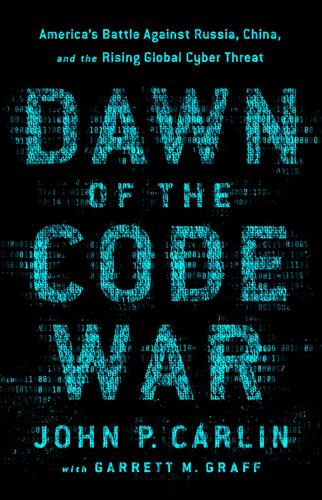
Dawn of the Code War: America's Battle Against Russia, China, and the Rising Global Cyber Threat
by
John P. Carlin
and
Garrett M. Graff
Published 15 Oct 2018
In fact, when Steven Levy’s book Hackers was published in the early 1980s, it was written as an elegy to a lost time and generation, when free-minded thinkers and tinkerers dominated the computer landscape—before the buttoned-up bureaucrats seized control of the digital world. “It is painful for me to bring back the memories of this time,” said Richard Stallman in the book, the MIT hacker who had advocated for no passwords. “The whole culture was wiped out.”35 Computers and the digital world were beginning to capture the imagination of the wider public; my family was one of the millions who first purchased a desktop computer in this era, marveling at how the room-sized behemoths of a previous era had been miniaturized to fit in the family den.
…
* Authorities knew well enough what to do with telephone-related crimes; shortly after that Esquire article on phone phreakers was published in 1971, John Draper was arrested and charged with toll fraud. He received probation, but had continued his phreaking, and the FBI stayed on top of him—surveilling him and arresting him again. The second time he went to prison. When he was released, he was hired by a new start-up named Apple Computer. * Richard Stallman, one of the early computing pioneers at MIT, advocated for users to adopt a simple carriage return as their password—when the login screen appeared, just hit Return and log in. “It’s much easier to type, and also stands up to the principle that there should be no passwords,” he told other users.
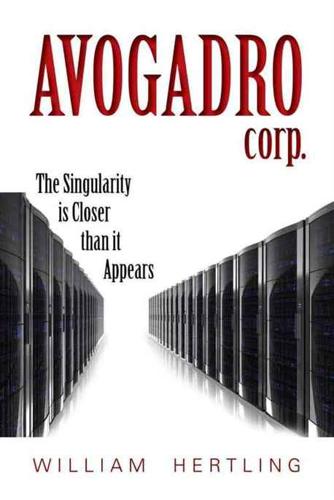
Avogadro Corp
by
William Hertling
Published 9 Apr 2014
Mike nodded his head yes, but David had a puzzled look on his face, and shook his head. “Social engineering is the name given to techniques for tricking people into giving you information or making changes to information systems,” Christine said. “Social engineering was popularized by hackers in the nineteen eighties. And by hackers, I don’t mean the good guy hackers like Richard Stallman. I’m thinking of folks like the Kevins.” Mike nodded his head again, but David looked even more puzzled, and turned around to look at his wife. “Honey, how can you be married to me, and not know this stuff? You know I was a total online geek as a kid, yes?” “What can I say?” David sighed.
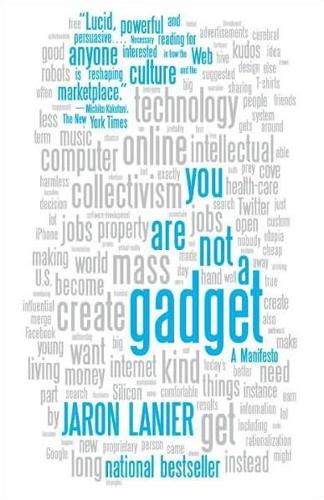
You Are Not a Gadget
by
Jaron Lanier
Published 12 Jan 2010
Visualize, if you will, the most transcendently messy, hirsute, and otherwise eccentric pair of young nerds on the planet. They were in their early twenties. The scene was an uproariously messy hippie apartment in Cambridge, Massachusetts, in the vicinity of MIT. I was one of these men; the other was Richard Stallman. Why are so many of the more sophisticated examples of code in the online world—like the page-rank algorithms in the top search engines or like Adobe’s Flash—the results of proprietary development? Why did the adored iPhone come out of what many regard as the most closed, tyrannically managed software-development shop on Earth?
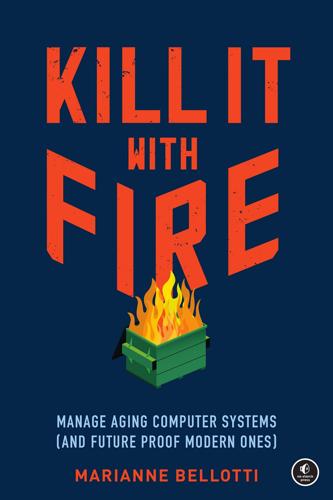
Kill It With Fire: Manage Aging Computer Systems
by
Marianne Bellotti
Published 17 Mar 2021
There was never any intention to create a full operating system from Linux; it was intended to be only a kernel for the specific chip architecture to which the creator happened to have access. The Linux operating system, therefore, was pieced together from a variety of software from other groups. Most of its Unix-like interfaces came from Richard Stallman’s GNU project, and GNU itself contained no Unix code by design. So in a way, Linux is a descendant of Unix that involves no code directly from Unix. But, why hold on to the Unix look and feel at all? Once the decision to start writing something completely new was made, what was the value of wrapping things up to look like Unix?
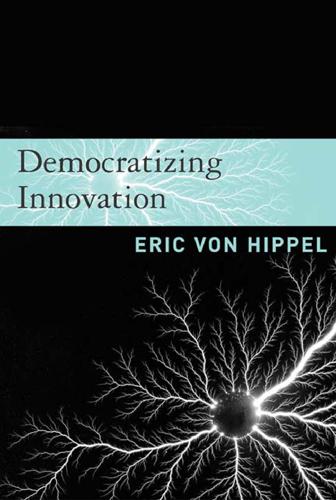
Democratizing innovation
by
Eric von Hippel
Published 1 Apr 2005
This firm, in accordance with normal commercial practice, then promptly restricted access to the “source code”3 of that software, and so prevented non-company personnel—including the MIT hackers who had been instrumental in developing it—from continuing to use it as a platform for further learning and development. Richard Stallman, a brilliant programmer in MIT’s Artificial Intelligence Laboratory, was especially distressed by the loss of access to communally 98 Chapter 7 developed source code. He also was offended by a general trend in the software world toward development of proprietary software packages and the release of software in forms that could not be studied or modified by others.
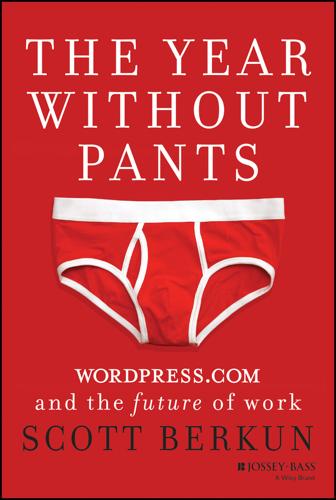
The Year Without Pants: Wordpress.com and the Future of Work
by
Scott Berkun
Published 9 Sep 2013
The fact that WordPress was open source meant little to me. I liked the idea of open source, but I didn't care enough for it to drive my decisions. I'd used open source software before when studying computer science in college, including countless caffeinated hours writing code in EMACS, a brilliant editing program made by Richard Stallman (who coined the term copyleft). I used other tools that were open, or free, or in the public domain, but that was rarely the reason I chose them. But for Mullenweg, open source was a central principle. He also cared how that principle attracted people with similar values. Programmers volunteered to write code for WordPress primarily because of the open philosophy work style he'd chosen.
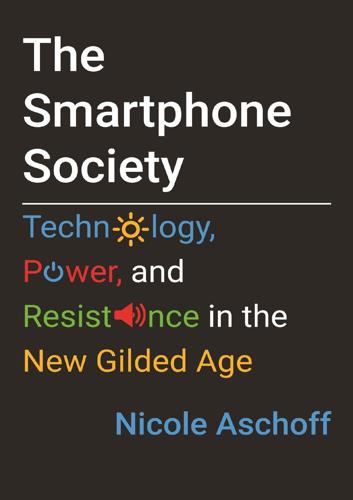
The Smartphone Society
by
Nicole Aschoff
Privacy is a fundamental right that needs to be reemphasized and reconsidered in the smartphone age. Instead of privacy being an afterthought, or worse, purposefully violated, in the design of our technology its importance should be written into the design of the software, algorithms, and apps that make the modern world go round. Free-software pioneer Richard Stallman argues that we need to redesign computer systems to have limited data collection ability, not just to regulate how the data is used once it is produced: “If we really want to secure our privacy, we’ve got to stop the collection of the data. Rules to limit how the collected data may be used may do some good, but they’re not very strong protection.

People Powered: How Communities Can Supercharge Your Business, Brand, and Teams
by
Jono Bacon
Published 12 Nov 2019
One kind was source code, the building blocks and recipe of software. Back in those early days, software was a closed-off world. Large companies such as IBM, Apple, and Microsoft produced software and kept their code such a carefully guarded secret that the fried-chicken Colonel would be jealous. While this was the norm, one person—Richard Stallman, furious that he couldn’t fix his printer software (because the code wasn’t available)—believed that all software code should be free for people to share and improve. Stallman kicked off the GNU community, who started making free software and sharing the code on the Internet.3 It was a magical combination: most of the people online back then were techies and programmers.
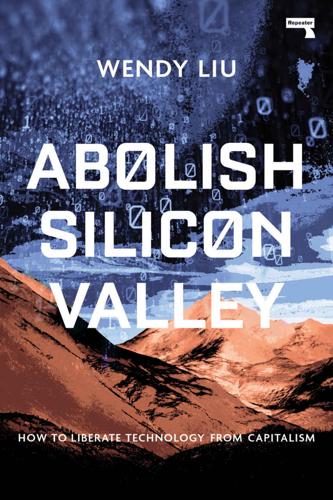
Abolish Silicon Valley: How to Liberate Technology From Capitalism
by
Wendy Liu
Published 22 Mar 2020
At first, I didn’t really know what that meant — I just knew that I didn’t have to pay to use the software — but gradually I understood that it was more than a pricing model: it was a cultural movement. Soon enough, I fell down the open source rabbit hole, devouring whatever books and essays I could get my hands on: Richard Stallman’s Free Software, Free Society; Neal Stephenson’s In the Beginning Was the Command Line; Eric S. Raymond’s The Cathedral and the Bazaar; Lawrence Lessig’s Free Culture. I scrutinised dictionaries of jargon so I could decipher the numerous flame wars debating the finer points of GPLv2 vs GPLv3, vim vs Emacs, tabs vs spaces.
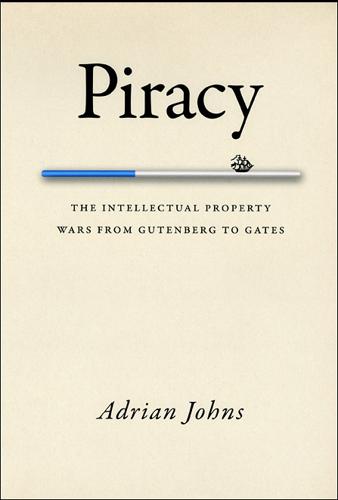
Piracy : The Intellectual Property Wars from Gutenberg to Gates
by
Adrian Johns
Published 5 Jan 2010
The bestknown exchange on these lines was a “conference” held in the WELL in 1989 under the aegis of Harper’s Magazine. Its immediate trigger was the panic over the first widely distributed worm but the exchange had time to develop broader themes, with participants arguing, changing their minds, and at length diverging irreconcilably. They included a number of veterans, Lee Felsenstein among them. Richard Stallman took part from MIT. Emmanuel Goldstein and two crackers going by the monikers Acid Phreak and Phiber Optik also contributed. The initial subject was the hacker ethic itself, which they variously construed, credited, and disdained. Most accepted that hacking was characterized by contempt for obstacles to technical progress.
…
The corporate world, meanwhile, could make money by touting “trusted systems” and deploying claims about security. Another part of that world could develop businesses of prevention, detection, and policing. And at the same time, alternatives to proprietorial software proliferated, staking their own moral and economic claims. Richard Stallman at MIT became their bestknown and most forthright advocate. Stallman held that the creation and circulation of “free” software – that is, code independent of proprietary restrictions – was a matter of the constitution of communities. He complained that in the digital realm exclusive properties made “pirates” out of what otherwise would be merely good, helpful neighbors.
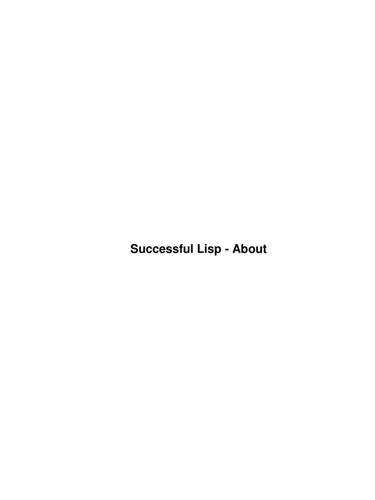
Successful Lisp - About
by
Unknown
However, I'm hoping that what you've learned here will forever color your perceptions as to what is possible, and suggest both techniques and ways of thinking that will be helpful to you in building those "small" applications like word processors, spreadsheets, and OLTP systems. Meanwhile, I'd like to show you some of the more visible applications that people have developed using Lisp. • Emacs • G2 • AutoCAD • Igor Engraver • Yahoo Store • ... Emacs More programmers are familiar with Emacs than with any other Lisp application. Richard Stallman conceived Emacs as an extensible editor. He wrote his own Lisp interpreter (not a compiler) specifically for the tasks used in editing text - the low-level text manipulation functions are built-in functions of Emacs Lisp. Over the decades, Emacs has grown to accomodate windowing systems and has accumulated a vast library of code to support programming, writing and personal communications.
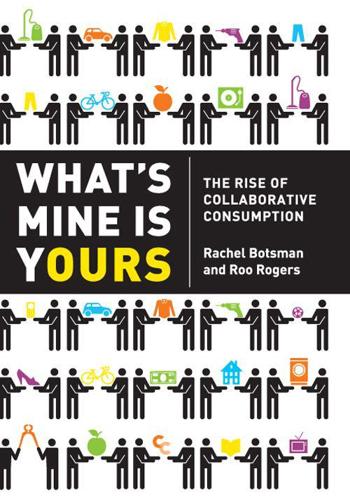
What's Mine Is Yours: How Collaborative Consumption Is Changing the Way We Live
by
Rachel Botsman
and
Roo Rogers
Published 2 Jan 2010
This has been brewing since April, and is starting to get ready. I’d like any feedback on things people like/dislike . . .”35 This hobby of Linus Torvalds’s would turn into Linux, the most prominent example of open-source software and the self-organizing power of the Internet. The roots of Linux can be traced back to Richard Stallman’s GNU Project at MIT to develop a comprehensive code that would be free and available around the world, but in 1981 a fundamental technological advancement was missing that made the difference between Stallman’s rebellious idea and Torvalds’s revolution: networked collaboration. When Torvalds announced his idea, he received thousands of responses from all over the world, even though the population of Internet was then less than 10 percent of its present size.36 Today, Linux is used by more than 18 million people around the globe37 and there continue to be more than 128,500 geographically dispersed volunteer programmers building and improving the software.38 These people are working together with a unified goal: to create the world’s best operating system.
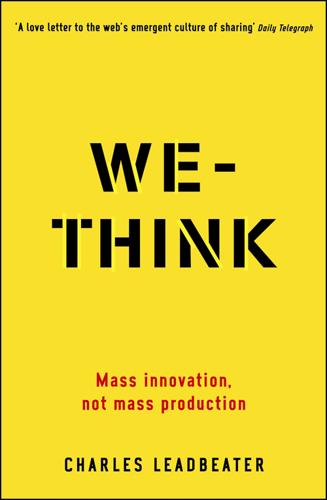
We-Think: Mass Innovation, Not Mass Production
by
Charles Leadbeater
Published 9 Dec 2010
Raymond, The Cathedral and the Bazaar (O’Reilly, 2001) 3 Doc Searls, ‘Making a New World’, in Chris DiBona, Danese Cooper and Mark Stone (Eds), Open Sources 2.0 (O’Reilly, 2006) 4 Glyn Moody, Rebel Code: Linux and the Open Source Revolution (Penguin, 2002) 5 Like many radical innovations Linux is not as revolutionary as it first seems. Computer scientists and engineers had been sharing equipment and code for decades. Richard Stallman, a computer scientist and hacker, had started work on an open-source operating system in the mid-1980s and created the General Public License (GPL) in 1985, which allowed users to copy a program, modify it and sell versions, so long as they made their modifications freely available to others.

The Wealth of Networks: How Social Production Transforms Markets and Freedom
by
Yochai Benkler
Published 14 May 2006
That growing literature, consistent with its own goals, has focused on software and the particulars of the free and open-source software development communities, although Eric von Hippel's notion of "user-driven innovation" has begun to expand that focus to thinking about how individual need and creativity drive innovation at the individual level, and its diffusion through networks of likeminded individuals. The political implications of free software have been central to the free software movement and its founder, Richard Stallman, and were developed provocatively and with great insight by Eben Moglen. Free software is but one salient example of a much broader phenomenon. Why can fifty thousand volunteers successfully coauthor Wikipedia, the most serious online alternative to the Encyclopedia Britannica, and then turn around and give it away for free?
…
They do this because it allows them to build better equipment, sell better services, or better fulfill their public role, even though they do not control the software development process and cannot claim proprietary rights of exclusion in the products of their contributions. 129 The story of free software begins in 1984, when Richard Stallman started working on a project of building a nonproprietary operating system he called GNU (GNU's Not Unix). Stallman, then at the Massachusetts Institute of Technology (MIT), operated from political conviction. He wanted a world in which software enabled people to use information freely, where no one would have to ask permission to change the software they use to fit their needs or to share it with a friend for whom it would be helpful.
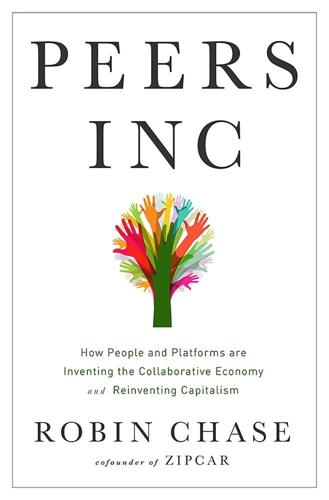
Peers Inc: How People and Platforms Are Inventing the Collaborative Economy and Reinventing Capitalism
by
Robin Chase
Published 14 May 2015
GPL AND CC: PROTECTING COMMUNITY-BUILT ASSETS FROM PRIVATE EXPLOITATION There are two examples of clever manipulation of existing patent and copyright laws that give us some interesting tools and ideas about how we might more fairly distribute the value created by peers in a Peers Inc organization. The first, General Public License (GPL), is an example of how innovative licensing can prevent the privatization of community-built assets in perpetuity, and sometimes expand them. In 1989, Richard Stallman of the Free Software Foundation invented the General Public License (GPL) for use with free and open-source software. According to Black Duck Software, the leading provider of systems to manage open-source software development, fully 54 percent of open-source projects in 2013 were associated with Stallman-created GPL licenses.12 GPL states that you can use a piece of open software any way you like, including improving upon it and selling it for profit.
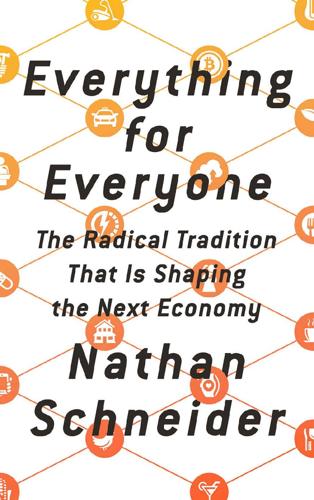
Everything for Everyone: The Radical Tradition That Is Shaping the Next Economy
by
Nathan Schneider
Published 10 Sep 2018
Linux and Unix servers host more than half of all websites.3 Commercial search engines, including Google, rely on the unpaid contributions of self-governing Wikipedia editors, and e-commerce is possible thanks to the open encryption protocol Secure Sockets Layer. These work precisely because their inner workings are public, for all to see. The story began with a hack. In order to protect the code-sharing habits of early hacker culture, and to protect them from the proprietary urges of corporations and universities, a geek at MIT named Richard Stallman inaugurated the free-software movement with the GNU General Public License. This and other “copyleft” licenses turned the law against itself; they employed an author’s copyright privileges in order to preserve the code as a commons, free for anyone else to use, adapt, and improve. Subsequently, legal scholar Lawrence Lessig translated this same hack to non-software cultural production through the array of Creative Commons licenses.4 Now, thanks to Creative Commons, a descendant of Stallman’s hack is a built-in option when you upload a video on YouTube.
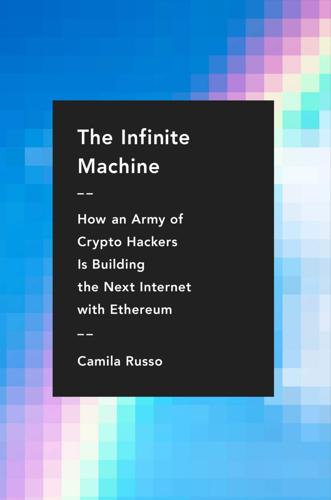
The Infinite Machine: How an Army of Crypto-Hackers Is Building the Next Internet With Ethereum
by
Camila Russo
Published 13 Jul 2020
Soon after the initial meetings, a mailing list formed so discussion could be broadened out from just San Francisco, and it quickly grew to hundreds of subscribers. As cypherpunks made headway, the open source software movement, which would also influence the development of blockchain technology, was growing. Supposedly it all started thanks to a jammed printer at the Massachusetts Institute of Technology in the late 1970s. Richard M. Stallman, a staff programmer at the university, had written code for the lab’s printer, which was on another floor, to save time by having the machine send a message to the lab’s central computer when the printer got jammed. Eventually the printer was replaced and when Stallman tried to implement the same hack, he found he couldn’t modify the code because it was proprietary information.

Managing Projects With GNU Make
by
Robert Mecklenburg
and
Andrew Oram
Published 19 Nov 2004
You can access this page at: http://www.oreilly.com/catalog/make3 To comment or ask technical questions about this book, send email to: bookquestions@oreilly.com For more information about O'Reilly books, conferences, Resource Centers, and the O'Reilly Network, see O'Reilly's web site at: http://www.oreilly.com Acknowledgments I'd like to thank Richard Stallman for providing a vision and the belief that it can come true. Of course, without Paul Smith, GNU make would not exist in its current form today. Thank you. I'd like to thank my editor, Andy Oram, for his unflagging support and enthusiasm. Cimarron Software deserves my thanks for providing an environment that encouraged me to begin this project.
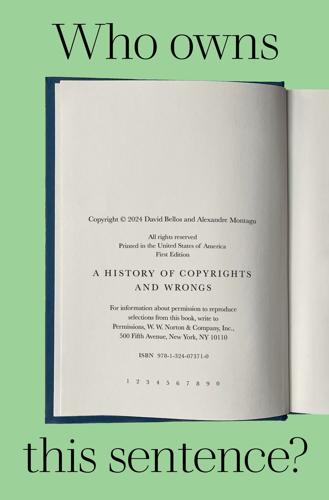
Who Owns This Sentence?: A History of Copyrights and Wrongs
by
David Bellos
and
Alexandre Montagu
Published 23 Jan 2024
Programmers had long been accustomed to sharing their work and tinkering with the work of others; many of them had no wish to see their culture of collaborative invention hampered or shut down. From hazy beginnings, the movement for keeping software free came to the fore in 1983 with the launch of Richard Stallman’s GNU Manifesto, followed in quick succession by the Free Software Foundation, the drafting of a General Public License, then the release of Linux, a free operating system. Arguments over models and approaches raged in the global community of hackers, inventors and computer scientists, but the broad idea of free software gained further traction in 1999 when Netscape Communications Corporation decided to release its Communicator search engine as “open source”, free for all to use.

European Founders at Work
by
Pedro Gairifo Santos
Published 7 Nov 2011
The original name for the business was nothing like Moo, it was terrible. The idea that I had was to basically subvert business cards and create a personal alternative, so I wanted it to have the name that would be the opposite to a business card. And I was looking on the web for ideas and I saw that Richard Stallman, the software activist, had used the term “pleasure cards” before. I thought it was a funny name that clearly distinguished them from business cards. The same way when you go to an airport when you are traveling, and they say, “Are you here on business or on pleasure?”… so, I thought I would call them pleasure cards.
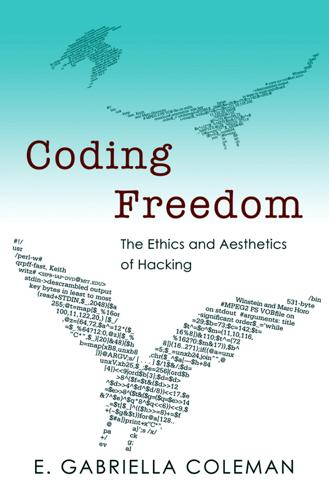
Coding Freedom: The Ethics and Aesthetics of Hacking
by
E. Gabriella Coleman
Published 25 Nov 2012
For example, in the early 1980s, “the precepts of this revolutionary Hacker Ethic,” Levy (1984, 39; emphasis added) observes, “were not so much debated and discussed as silently agreed upon. No Manifestos were issued.” Yet (and somewhat ironically) a mere year after the publication of his book, MIT programmer Richard Stallman charted the Free Software Foundation (FSF) ([1996] 2010) and issued “The GNU Manifesto,” insisting “that the golden rule requires that if I like a program I must share it with other people who like it.”12 Today, hacker manifestos are commonplace. If hackers did not discuss the intricacies of ethical questions when Levy first studied them, over the span of two decades they would come to argue about ethics, and sometimes as heatedly as they argue over technology.
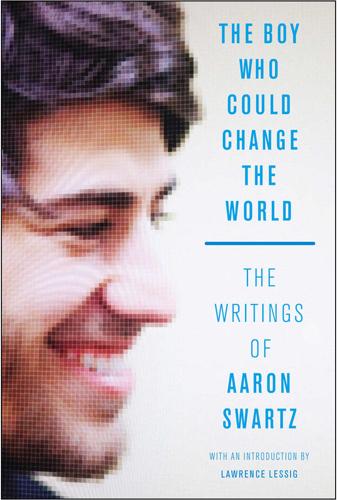
The Boy Who Could Change the World: The Writings of Aaron Swartz
by
Aaron Swartz
and
Lawrence Lessig
Published 5 Jan 2016
I’m not saying that we should change our policies or automatically keep everything a newcomer decides to add so we don’t hurt their feelings. But we do need to think more about how to enforce policies without turning valuable newcomers away, how we can educate them instead of alienating them. At Wikimania, no less an authority than Richard Stallman (who himself long ago suggested the idea of a free online encyclopedia) wandered around the conference complaining about a problem he’d discovered with a particular Wikipedia article. He could try to fix it himself, he noted, but it would take an enormous amount of his time and the word would probably just get reverted.
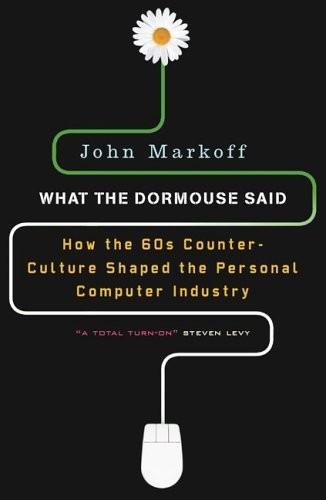
What the Dormouse Said: How the Sixties Counterculture Shaped the Personal Computer Industry
by
John Markoff
Published 1 Jan 2005
But whatever it is, a good hack must be aesthetically perfect. If it’s a joke, it must be a complete one. If you decide to turn someone’s dorm room upside-down, it’s not enough to epoxy the furniture to the ceiling. You must also epoxy the pieces of paper to the desk.”11 And yet, he demurred that when Richard Stallman, one of MIT’s best-known hackers, stated that information should be free, Stallman’s ideal wasn’t based on the idea of property as theft—an ethical position—but instead on the understanding that keeping information secret is inefficient: “it leads to unaesthetic duplication of effort.”12 Anyone who has spent time around the computer community, particularly as it evolved, will recognize that both writers are correct.
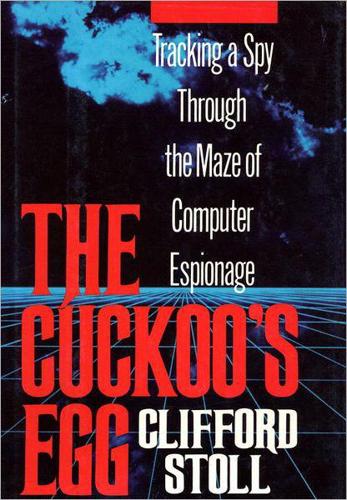
Cuckoo's Egg
by
Clifford Stoll
Published 2 Jan 1989
For this attack, he needed to find a way to move his egg-program into the protected systems nest. The operating system’s barriers are built specifically to prevent this. Normal copy programs can’t bypass them; you can’t issue a command to “copy my program into systems space.” But there was a wildcard that we’d never noticed. Richard Stallman, a free-lance computer programmer, loudly proclaimed that information should be free. His software, which he gives away for free, is brilliantly conceived, elegantly written, and addictive. Over the past decade Stallman created a powerful editing program called Gnu-Emacs. But Gnu’s much more than just a text editor.
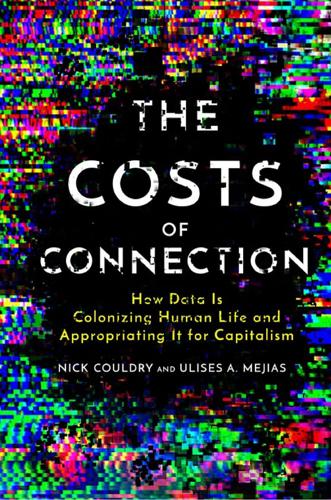
The Costs of Connection: How Data Is Colonizing Human Life and Appropriating It for Capitalism
by
Nick Couldry
and
Ulises A. Mejias
Published 19 Aug 2019
We are also grateful to audiences at Cardiff University and Tampere University in 2018, and before that at the preconference on Big Data from the Global South at IAMCR 2017 in Cartagena, Colombia, for responses to presentations of parts of our argument. Our thanks go also to those who took the time to give careful readings and comments on various chapters of our manuscript: Mike Ananny, Asma Barlas, Julie Cohen, Mary Gray, Daniel Greene, Naeem Inayatullah, Richard Stallman, and Stanford’s two anonymous readers who commented on a complete version from April 2018. The book has benefited greatly from their insights. We are also very grateful to Alison Rainey for her subtle and detailed copy edit of our manuscript, which brought many improvements. Needless to say, we take responsibility for all errors and opinions represented here.
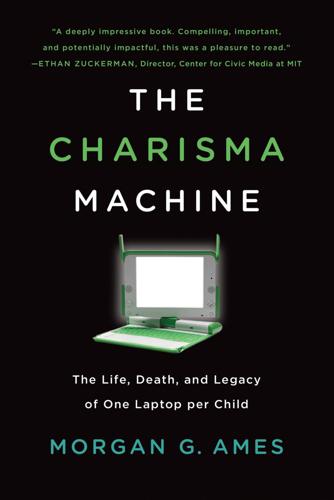
The Charisma Machine: The Life, Death, and Legacy of One Laptop Per Child
by
Morgan G. Ames
Published 19 Nov 2019
In an interview on National Public Radio’s Radio Open Source program in February 2007—in which the XO laptop was described by the commentator as “a hacker’s paradise, a real open-source playing field”—Bender elaborated that an open-source laptop allows for deep exploration: “We want the children to be able to reach inside the machine, ... and a closed system does not allow that.”52 Chris Blizzard articulated the connection to free and open-source software more directly by stating that it is necessary for learning: “The commitment to open source and free software is still one of the main [principles] of the project. Learning requires the transparency that free and open source software provides.”53 The connection between this commitment and the ethos of MIT’s hacker community is straightforward; indeed, a number of this community’s members, such as Free Software Foundation founder Richard Stallman, built their careers and lives around it. This group’s passion for free and open-source software is central enough that it appears in the hacker ethic as Steven Levy articulated it: “all information should be free” and access to computers should be “unlimited and total.”54 The primary and easiest target of this commitment was the laptop’s interface, Sugar, which was built on top of the Red Hat version of the (open-source) Linux operating system and was all open source itself.
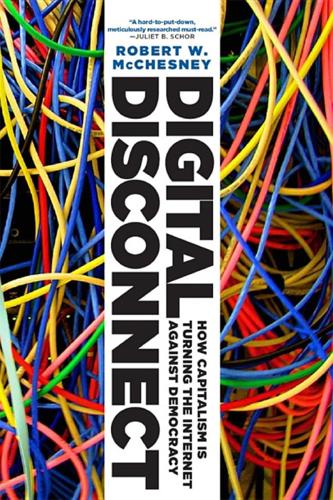
Digital Disconnect: How Capitalism Is Turning the Internet Against Democracy
by
Robert W. McChesney
Published 5 Mar 2013
The single greatest concern in the Internet community during this period was the growth of patents and efforts by commercial interests to make proprietary what had once been open and free. As commercial interests were seen taking an increasing interest in the Internet, there was, as James Curran has documented, a “revolt of the nerds”—led by people like Richard Stallman and Linus Torvalds—which launched the open-software movement in the 1980s.38 Much of the noncommercial institutional presence on the Internet today can be attributed to this movement and its progeny. When Tim Berners-Lee created the World Wide Web in 1990, he said it would have been “unthinkable” to patent it or ask for fees.

Machine, Platform, Crowd: Harnessing Our Digital Future
by
Andrew McAfee
and
Erik Brynjolfsson
Published 26 Jun 2017
Second, and at least as important, they knew how their work could and couldn’t be used in the future—who could own it, modify it, profit from it, restrict access to it, and so on. Early in Linux’s history, Torvalds decided to put it under the GNU General Public License, or GNU GPL, a software license developed by the free-software pioneer Richard Stallman in 1989. It specifies two important considerations. The first is that the software remains free for end users—whether individuals, organizations, or companies—to run, study, copy, and modify. The second is that all modifications, extensions, and future versions of Linux would remain equally free.
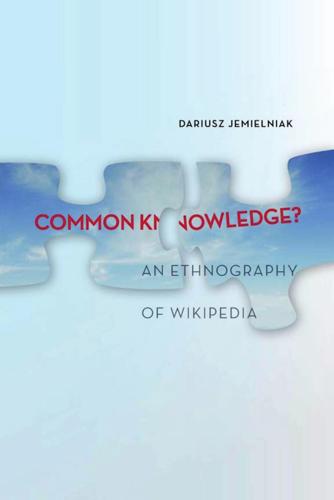
Common Knowledge?: An Ethnography of Wikipedia
by
Dariusz Jemielniak
Published 13 May 2014
In the end, Torvalds is a benevolent dictator, but a peculiar kind of dictator—one whose power is accepted voluntarily and on a continuing basis by the developers he leads. (S. Weber, 2004, p. 90) Another F/LOSS community operating on a similar leadership model is the Emacs editors family, led by Richard Stallman (also the founder of GNU and the Free Software Foundation). According to some authors, the existence of a central authority figure is one of the essential ingredients in opencollaboration projects (Carr, 2007). As history shows, though, both of these philosophies work just fine in the open-collaboration environment.

Machines of Loving Grace: The Quest for Common Ground Between Humans and Robots
by
John Markoff
Published 24 Aug 2015
He painstakingly went through several of my drafts, offering context and grammar tips. Finally, to Leslie Terzian Markoff for sharing it all with me. NOTES In cases where quotes are not attributed, they are based on the author’s interviews. PREFACE 1.This distinction was famously made by Richard Stallman, an iconoclastic software developer who pioneered the concept of freely shared software. 1|BETWEEN HUMAN AND MACHINE 1.John Markoff, What the Dormouse Said: How the Sixties Counterculture Shaped the Personal Computer Industry (New York: Viking, 2005), 282. 2.Moshe Y. Vardi, “The Consequences of Machine Intelligence,” Atlantic, October 25, 2012, http://www.theatlantic.com/technology/archive/2012/10/the-consequences-of-machine-intelligence/264066. 3.Frank Levy and Richard J.

Code: The Hidden Language of Computer Hardware and Software
by
Charles Petzold
Published 28 Sep 1999
The operating system might need to implement a technique called virtual memory, in which blocks of memory are stored in temporary files during periods when the memory blocks aren't needed and then read back into memory when they are needed. The most interesting development for UNIX in recent years has been the Free Software Foundation (FSF) and the GNU project, both founded by Richard Stallman. GNU (pronounced not like the animal but instead with a distinct G at the beginning) stands for "GNU's Not UNIX," which, of course, it's not. Instead, GNU is intended to be compatible with UNIX but distributed in a manner that prevents the software from becoming proprietary. The GNU project has resulted in many UNIX-compatible utilities and tools, and also Linux, which is the core (or kernel) of a UNIX-compatible operating system.

This Machine Kills Secrets: Julian Assange, the Cypherpunks, and Their Fight to Empower Whistleblowers
by
Andy Greenberg
Published 12 Sep 2012
Some of its most ardent supporters have become its most bitter critics, and its releases have dropped sharply in frequency and impact. Assange seems more interested in hosting a TV talk show on the Russian government–funded network RT than in rebuilding his organization, and WikiLeaks-watchers from Evgeny Morozov to Richard Stallman argue that the group’s fate holds dark lessons. With WikiLeaks, they say, the Web turned out to be less the free, anarchic realm we once imagined than a restrictive platform tightly controlled by corporations and governments. But it would be a mistake to focus only on how WikiLeaks has been contained, muzzled, punished, and sabotaged while ignoring a larger lesson: how the group has inspired an entire generation of political hackers and digital whistleblowers.

Gnuplot in Action: Understanding Data With Graphs
by
Philipp Janert
Published 2 Jan 2010
And Lotus 123 was never going to work with the HP plotter or AED terminals we had right there. In the fall of 1986, I suggested to Tom that we write the program we really wanted. He agreed. We settled on calling it gnuplot as a pun on a lame program at school that predated ours called “newplot.” It wasn’t until a month xvii xviii FOREWORD later that we read Richard Stallman’s Gnu Manifesto. That resonated with us and matched our thinking perfectly. The common name was simply a lucky coincidence. Fortran and Pascal were the prevailing languages taught in school then, but neither was portable. C was clearly a better fit and Unix was the right OS to start with. Tom focused on writing the equation parser and P-code evaluator while I focused on the command-line processor and graphics drivers.
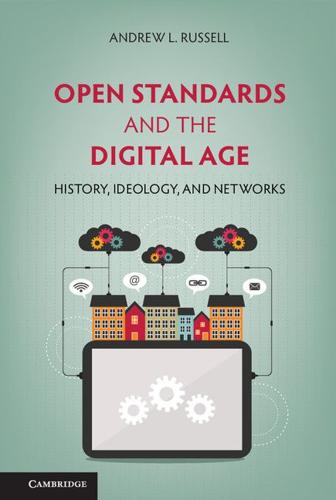
Open Standards and the Digital Age: History, Ideology, and Networks (Cambridge Studies in the Emergence of Global Enterprise)
by
Andrew L. Russell
Published 27 Apr 2014
The computer manufacturer Sun Microsystems, for example, built an open systems advertising strategy that promised to liberate customers from being painted into a corner and locked in to proprietary products that were unreliable and expensive to maintain. In 1998, a group of programmers led by Eric Raymond coined the term “open source” to gain support from engineers who sought alternatives to proprietary software but who perceived Richard Stallman’s crusade for “free software” as too radical. More recently, “open libraries” has emerged as a mantra for orienting the libraries of the twenty-first century around the virtues of open access, open data sets, open source software, and open government practices.39 At the same time, powerful incumbents such as IBM and American Express have learned to mobilize the rhetoric and technologies of openness to reify their positions as market leaders and advance their own proprietary ambitions.
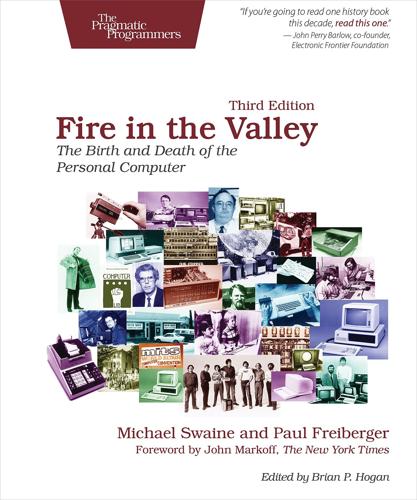
Fire in the Valley: The Birth and Death of the Personal Computer
by
Michael Swaine
and
Paul Freiberger
Published 19 Oct 2014
Torvalds called his operating system Linux, and he made the source code public, inviting the programming community to contribute to its enhancement. Linux was itself built on a tradition of open development. Torvalds even toyed with naming it Freax, for Free Unix. Torvalds did all of his development work using another freely available Unix variant called MINIX, written by Andrew Tanenbaum in the Netherlands. At the same time, Richard Stallman and Bill Joy had variants of Unix (called GNU for “GNU’s Not Unix,” and BSD for "Berkeley Software Distribution," respectively) in advanced states of development. All were in some fashion or other open software. Linux was soon covered by the GNU General Public License, written originally by Stallman, which guarantees users the right to use, study, share, and modify the licensed software.

How I Became a Quant: Insights From 25 of Wall Street's Elite
by
Richard R. Lindsey
and
Barry Schachter
Published 30 Jun 2007
He had a habit of leaving Nutty Buddies (vending-machine ice cream cones topped with chocolate and nuts) in his front pocket and forgetting about them. This made for a distinctive fashion statement. He was also an early avatar of the free software, open-source movement, which later became GNU and Linux. Richard Stallman was encamped there. Symbolics, founded by the AI Lab administrator, who wore a suit with no food on it, was more businesslike. Both companies quickly fell victim to the fate of computer firms that make special-purpose machines. If you ever want to start one of JWPR007-Lindsey May 7, 2007 16:12 David Leinweber 19 these, do something with better prospects of success like invading Russia in winter.
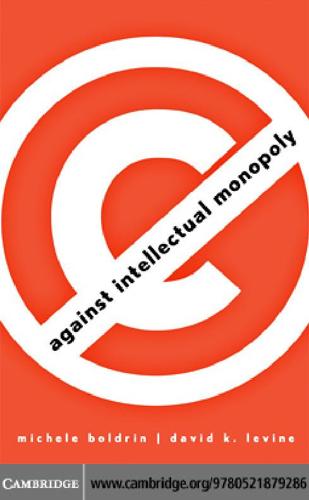
Against Intellectual Monopoly
by
Michele Boldrin
and
David K. Levine
Published 6 Jul 2008
P1: KNP head margin: 1/2 gutter margin: 7/8 CUUS245-02 cuus245 978 0 521 87928 6 May 28, 2008 10:35 20 Against Intellectual Monopoly Why has the software market worked so well under competition and without intellectual monopoly? The wide use of free software licenses has unleashed the great collaborative benefit of competition. Open-source software makes available the underlying source code from which the computer programs are compiled. Of particular importance is the free software movement, pioneered by Richard Stallman and others. Free software not only is open source but also is released under a license such as the GNU General Public License (GPL),which allows modifications and distribution only when the source code to those modifications is made available under the same license. It should be understood here that the word free here means (according to the motto of the GNU project) “free as in freedom, not free as in beer.”

Reality Is Broken: Why Games Make Us Better and How They Can Change the World
by
Jane McGonigal
Published 20 Jan 2011
DOI: 10.1016/S0140-6736(07)61415-9. 2 Lyubomirsky, The How of Happiness, 14. 3 Ibid., 7. 4 Ibid., 72. 5 Ibid. 6 Seligman, Authentic Happiness, xii. 7 Weiner, The Geography of Bliss, 310. 8 Ben-Shahar, Happier, 165-66. 9 Williams, Sam. “Hack, Hackers and Hacking.” In Free as in Freedom: Richard Stallman’s Crusade for Free Software (Sebastopol, CA: O’Reilly, 2002). Also available online at http://oreilly.com/open-book/freedom/appb.html. 10 Caplan, Jeremy. “Hacking Toward Happiness.” Time, June 21, 2007. http://www.time.com/time/magazine/article/0,9171,1635844,00.html. 11 I coined the term in 2007, but I’d already been doing it for years by then.

Whole Earth: The Many Lives of Stewart Brand
by
John Markoff
Published 22 Mar 2022
While Apple cofounder Steve Wozniak argued that the term hacker represented the child in everyone, a well-known programmer named Brian Harvey warned there was a dark side as well, and the general public would soon come to see the word as synonymous with computer outlaws who broke into computers for sport and profit. Another important debate took place over the economic value of software. Richard Stallman, a young MIT programmer who had developed freely shareable versions of several key programming languages, stated that his goal was to make all software free. That angered other attendees such as Apple Macintosh designer Bill Atkinson, who responded, “Hackers want me to give [this] Quickdraw code away, but there is this thing called IBM and I want Apple to be around in 20 years.”[26] Others, such as former Quarterly editor Andrew Fluegelman and former Microsoft programmer Bob Wallace, who had coined the terms freeware and shareware, respectively, tried to walk a middle ground, giving away their software and asking for donations.
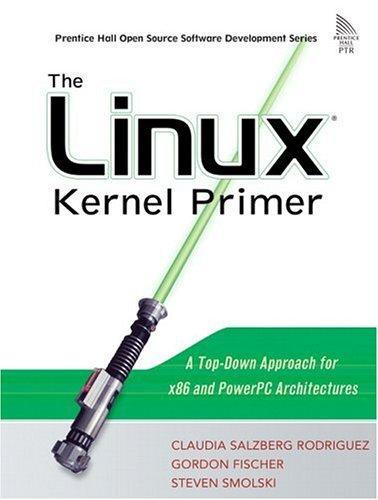
The Linux kernel primer: a top-down approach for x86 and PowerPC architectures
by
Claudia Salzberg Rodriguez
,
Gordon Fischer
and
Steven Smolski
Published 15 Nov 2005
The authors are intimately familiar with the kernel, and this knowledge shows through; by the end of the book, you and the kernel will at least be good friends, with the prospect of a deeper relationship ahead of you. The Linux kernel is "Free" (as in freedom) Software. In The Free Software Definition,[1] Richard Stallman defines the freedoms that make software Free (with a capital F). Freedom 0 is the freedom to run the software. This is the most fundamental freedom. But immediately after that is Freedom 1, the freedom to study how a program works. This freedom is often overlooked. However, it is very important, because one of the best ways to learn how to do something is by watching other people do it.
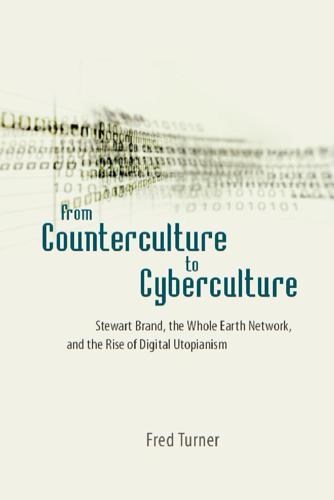
From Counterculture to Cyberculture: Stewart Brand, the Whole Earth Network, and the Rise of Digital Utopianism
by
Fred Turner
Published 31 Aug 2006
In particular, he suggested, they wanted to “witness or have the group articulate what the hacker ethic was.”63 Brand and Kelly aimed to explore via the conference whether hackers might constitute the sort of cultural vanguard for the 1980s that the back-to-the-land and ecology crowds had hoped to be for the decade before. Something like 150 hackers actually arrived. Among others, they included luminaries such as Steve Wozniak of Apple, Ted Nelson, free software pioneer Richard Stallman, and Ted Draper—known as Captain Crunch for his discovery that a toy whistle he found in a box of the cereal gave just the right tone to grant him free access to the phone system. Some of the hackers worked alone, part-time, at home; others represented such diverse institutions as MIT, Stanford, Lotus Development, and various software makers.

ZeroMQ
by
Pieter Hintjens
Published 12 Mar 2013
It’s a freedom we need, but it should be based on consensus, not one person’s dogma. However, making random changes “just because” is not good. In ØMQ v3.x, did we benefit from renaming ZMQ_NOBLOCK to ZMQ_DONTWAIT? Sure, it’s closer to the POSIX socket recv() call, but is that worth breaking thousands of applications? No one ever reported it as an issue. To misquote Richard Stallman: “Your freedom to create an ideal world stops one inch from my application.” A patch that introduces new features to a Public Contract SHOULD do so using new names. We had the experience in ØMQ once or twice of new features using old names (or worse, using names that were still in use elsewhere).

Accelerando
by
Stross, Charles
Published 22 Jan 2005
While he was dancing the night away in Annette's arms, the global reputation market has gone nonlinear: People are putting their trust in the Christian Coalition and the Eurocommunist Alliance – always a sign that the times are bad – while perfectly sound trading enterprises have gone into free fall, as if a major bribery scandal has broken out. Manfred trades ideas for kudos via the Free Intellect Foundation, bastard child of George Soros and Richard Stallman. His reputation is cemented by donations to the public good that don't backfire. So he's offended and startled to discover that he's dropped twenty points in the past two hours – and frightened to see that this is by no means unusual. He was expecting a ten-point drop mediated via an options trade – payment for the use of the anonymous luggage remixer that routed his old suitcase to Mombasa and in return sent this new one to him via the left-luggage office in Luton – but this is more serious.

From eternity to here: the quest for the ultimate theory of time
by
Sean M. Carroll
Published 15 Jan 2010
Schrödinger didn’t use that term in his lectures because he worried that the connotations were confusing: The energy isn’t really “free” in the sense that you can get it for nothing; it’s “free” in the sense that it’s available to be used for some purpose.161 (Think “free speech,” not “free beer,” as free-software guru Richard Stallman likes to say.) Gibbs realized that he could use the concept of entropy to cleanly divide the total amount of energy into the useful part, which he called “free,” and the useless part:162 total energy = free energy + useless (high-entropy) energy. When a physical process creates entropy in a system with a fixed total amount of energy, it uses up free energy; once all the free energy is gone, we’ve reached equilibrium.

Coders at Work
by
Peter Seibel
Published 22 Jun 2009
As a systems-support guy for Lisp, I was often called to people's terminals and asked to help them. And I fairly quickly noticed that I couldn't sit down at their TECOs and help them modify their programs because I'd be faced with a set of key-bindings and I had no idea what they were going to do. Seibel: Was one of these guys Richard Stallman? Steele: No, Stallman was the implementer and supporter of TECO. And he provided the built-in real-time edit mode feature, although I think Carl Mikkelsen had worked on the early version of it. He provided the key-bindings feature that made all of this possible. Anyway, there were something like four different macro packages and they were incompatible, and I decided to play standards guy, or community reconciliation guy.
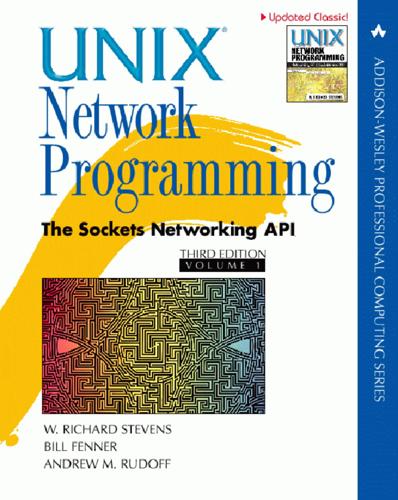
UNIX® Network Programming, Volume 1: The Sockets Networking API, 3rd Edition
by
W. Richard Stevens, Bill Fenner, Andrew M. Rudoff
Published 8 Jun 2013
It specified the C language interface into a Unix-like kernel and covered the following areas: process primitives (fork, exec, signals, and timers), the environment of a process (user IDs and process groups), files and directories (all the I/O functions), terminal I/O, system databases (password file and group file), and the tar and cpio archive formats. The first POSIX standard was a trial-use version in 1986 known as ‘‘IEEE-IX.’’ The name ‘‘POSIX’’ was suggested by Richard Stallman. • IEEE Std 1003.1 – 1990 (356 pages) was next, and it was also known as ISO/IEC 9945 – 1: 1990. Minimal changes were made from the 1988 to the 1990 version. Appended to the title was ‘‘Part 1: System Application Program Interface (API) [C Language],’’ indicating that this standard was the C language API